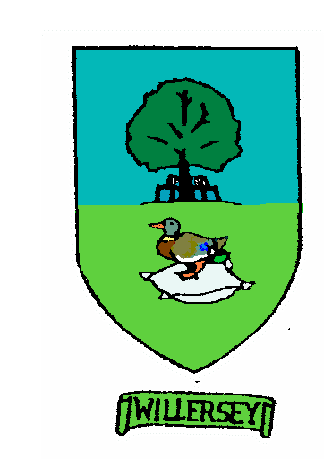

Willersey History Society


 |
 |
Willersey History Society |
 |
 |
| Willersey has a facebook page. Home Page | Menu & Search Page Email us here:- | ||||||||||||||||||||
|
There are records of the village of Willersey being in existence since at least the 8th century so it has a long history. This has to be an abridged record. “The secret of being boring is to say everything. - Voltaire.” The Domesday Book, completed in 1086, records 16 villagers, 4 smallholders, 2 slaves and 1 priest. On a map, the parish of Willersey has a curious elongated shape and extends to 1,177 acres. It runs up the Cotswold escarpment to the Roman road Buckle Street, which in turn runs over the top of the hills and divides the ancient parish quarries of Willersey and Saintbury. Willersey has been inhabited and farmed for thousands of years. Iron Age works can still be seen adjacent to the Broadway Golf Club car park. There is a mound in Willersey Camp, on the top of the Cotswold Hills, very much like a long barrow, though without excavation it would be impossible to be certain as to its nature. Its length is 160 feet, greatest width 66 feet, and greatest height four feet six inches. Its direction is east and west with the highest part being at the east end. The interior seems to be composed of oolitic rubble and slabs, similar to that found in other Gloucestershire barrows. Many fields in Willersey still retain their Saxon field names. History has only been recorded for the last two hundred generations. For the two thousand or so generations before that our ancestors were too busy surviving to record anything much at all (if they had the language). There is a curious feature in the parish boundary of Willersey, Saintbury,Campden and Broadway where they all nearly meet near Gypsy Springs on the A44 road. It is a curious triangular excrescence at the southernmost tip of Willersey parish that looks as if it had been stolen from Saintbury. lt is bounded on the northwest by Saintbury, on the east by Campden and on the south by Broadway. Until very recently this could be identified from the road by the old hedges that surrounded this area, but modern farming practice has more or less extinguished the old field and parish boundary markers. This feature has been part of the parish boundary for at least 1,150 years - it is described in a charter granting Willersey to Evesham Abbey, dated betwcen 840 and 852, and is called Eadulfing Gore. (Was perhaps Eadulf thc first man hanged there?} Here is a painting of Evesham Abbey before it was demolished by Henry VIII. 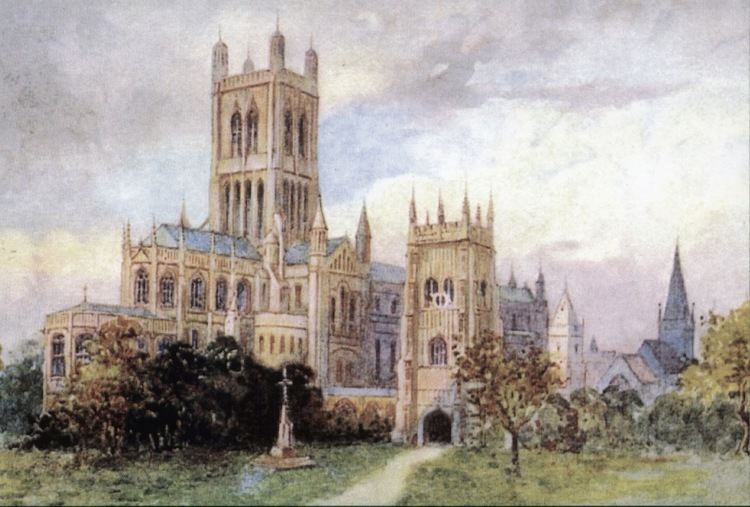 This is an extensive history of Evesham Abbey and a list of its Abbots. These homes: these stones: the soil mainly clay. The lofty hill: background to gardens gay. The orchards, quiet lanes: Many a graceful tree. Three ancients: pool, school and Church complete with tower and belfry, Combine to make our Village “Willersey” Not far from Willersey near to Dovers Hill on Kingcombe Lane is the Kiftsgate Stone where Saxon Kings were proclaimed and is the site of a moot. Moots were open-air meeting places set aside for use by courts and other bodies who were responsible for the administration and organisation of the countryside in Anglo-Saxon and medieval England. The country was divided at the time into hundreds, not todays Shires. 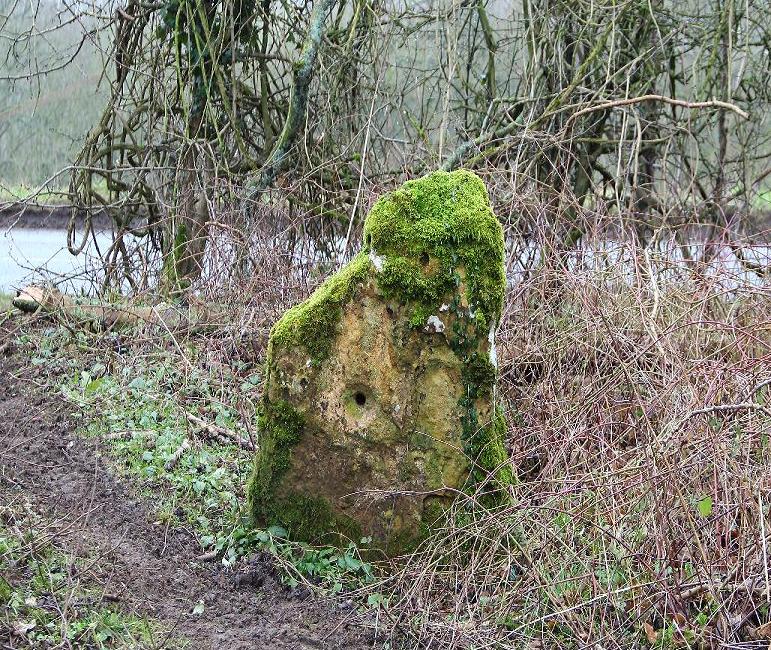 ( Another notable, reasonably local stone is the Four Shire Stone.) In 1831 Willersey had a population of 327 and in 1870 it was 373 in 88 houses. By 1901 it was 385 and as of the census of March 2011 this had increased to 816 people. Because of the building of 90 additional houses, Willersey will experience the greatest ever percentage increase in its population. The results from the 2021 census give Willersey a population of 991. Here are some recent population statistics for Willersey. These are more results from the census and other sources. It has an area of 0.445 sq.km which gives a current population density of 1,834 inhabitants per square km. Another Source of Willersey statistics. Most of the soil is a rich clay loam lias soil with limestone gravel and the subsoil is also clay and gravel but where Willersey goes up the Cotswold escarpment there is stone in the ground. This lias soil produces good crops. It is very fertile, producing crops over the years of wheat, barley and beans and a considerable amount of fruit - apples, pears, plums and cherries. It is unfortunate there are not more orchards attached to the gardens in the Cotswolds. The reader will doubtless remember Doctor Johnson's advice to his friends always to have a good orchard attached to your houses. He said that he once knew a clergyman of small income who brought up a family very reputably by chiefly feeding them on apple dumplings. Many agricultural labourers who were unable to find work went off to the coal mines and big towns. Some went into the army. Others emigrated so the distress that is not so apparent in this district as the burdens of the times would lead one to expect. The Cotteswold women obtain employment in the fields at certain seasons of the year. They are poorly paid but they are usually more conscientious and hard working than the men. Most of the cottages are kept scrupulously clean. They have an air of homely comfort which calls forth the admiration of all strangers. The children to when they go to church on Sundays are dressed with the neatness of good taste that are simply astonishing when one recalls the income of a labourer on the Cotswolds seldom alas averaging more than 14 shillings a week. A boy of 12 years of age is able to keep himself earning about five shillings per week,. Cheerful and manly little chaps they are to watch a boy of 14 years managing a couple of great strong cart horses either at the plough or with the waggons is a sight to gladden the heart of man. The chief crops in 1897 were wheat, beans and grass on pasture land. Willersey has benefited greatly from its geographical position with stone for building which was more easy to deliver down hill from the quarry up the hill. Historically very profitable sheep on the hills and good growing soil in the Vale at the bottom of the hill contributed to its affluence. If you travel up Campden Lane and turn right towards the Golf Club then you pass through the now disused Willersey Quarry mostly on the right hand side of the road. The Saintbury quarry was mostly on the left hand side of the road. For more census data see our family history page. Here and here are some official figures. Also see this brief snapshot from the past . Many Cotswold villages held annual wakes and feasts surviving from at least mediaeval times but the Olympic Games had a unique character. They were instituted about 1612 by Robert Dover of Aston Subsavage and were held on the natural erema of the hillside overlooking the Vale now known as Dover's Hill. The events included horse racing and coursing, wrestling, backsword fighting, juggling and aerobatics. They flourished annually under Dover's patronage and after his death in 1641. Then Puritan disapproval caused their closure. They attracted not only the local villages but also the nobility and gentry who journeyed to them from miles around. The games were revived at the restoration and continued into the 19th century. The Gentry still held house parties but the event was tending to become rowdier and a crisis occured in 1851. In that year the tunnel for the Oxford Worcester and Wolverhampton railway was being built under Mickelton Hill. Large gangs of Black Country and Irish navvies were in the neighbourhood. These men invaded Camden for the games. The memory of the fighting was still fresh half a century later. An earlier rector of Weston Subedge near Saintbury had an even greater influence on the religious life not only of this neighbourhood but of the whole country. By the main road in the village is a large Cotswold stone house called Latimers which was the family home of William Latimer a classical scholar, translator of international reputation and a close friend of Erasmus and Linacre at Oxford. A more recent servant to Saintbury Church, William Smith the late 19th century parish clark is the hero of Algernon Gissing's the Footpath way in Gloucestershire, published in 1924. Half a century before conservation of the countryside was invented Gissing deplored the countryman's indifference to the beauty around him and the way in which even then the Cotswolds were being ruined by the dumping of rubbish in the mellowing quarries the tarring of the natural stone roads, the mowing of the roadside grasses and wild flowers and the ploughing of prehistoric monuments. But his book was not merely nostalgic he wrote with rare perception about the Cotswolds. William Smith parish clerk and roadmender humble and entirely contented countryman was the source of much of his information. William Smith had played in the church orchestras before the introduction of organs and harmoniums. He had chopped up the village stocks for firewood, had met an old man who recalled hearing the proclamation at the Santbury Cross for the reform of the calendar in 1752, and had been present at the consecration of the new church in Broadway in 1840. A village in the UK is a compact settlement of houses, smaller in size than a town, and originally based on agriculture or, in some areas, mining, quarrying or sea fishing. Villages are normally permanent, with fixed dwellings. The dwellings of a village are fairly close to one another, not scattered broadly over the landscape. Homes were situated together for sociability and defence. The land surrounding the living quarters was farmed. The major factors in the village type of settlement are location of water sources, organisation of agriculture and landholding. In hilly areas villages are often found along the spring line halfway down the hillsides, and originate as spring line settlements, with original open field systems around the village. In woodland areas clearances produced small hamlets around village greens. Not so long ago villages were largely self sufficient. They could obtain most of their requirements locally even though many goods and services were brought in from urban and industrial areas. A thriving rural community should possess the following:- Public Utilities such mains water, electricity and sewerage. (Maybe add fibre broadband nowadays). Social facilities such as a primary school, places of worship, a village hall, recreation facilities, a pub, a garage, public transport and safe roads with good surfaces. Shops for day-to-day needs and a post office. Employment either in the village or conveniently situated nearby. Recreation facilities. Public transport and safe roads with good surfaces. Villages of 170 to 600 persons have a pub, post office, village hall and a shop. Villages with 600 to 1000 residents have a primary school, playing field and a garage. Many Cotswold villages held annual wakes and feasts surviving from at least mediaeval times but the Olympic Games had a unique character. They were instituted about 1612 by Robert Dover of Aston sub Edge and were held on the natural arena of the hillside overlooking the Vale now known as Dover's Hill. The events included horse racing and coursing, wrestling, backsword fighting, juggling and aerobatics. They flourished annually until Puritan disapproval in 1641 caused their closure. They attracted not only the local villagers but also the nobility and gentry who journeyed to them from miles around. The games were revived at the Restoration and continued into the 19th century. The Gentry still held house parties but the event was tending to become rowdier and a crisis occurred in 1851. In that year the tunnel for the Oxford Worcester and Wolverhampton railway was being built under Mickelton Hill and large gangs of Black Country and Irish navvies were in the neighbourhood. Such were the men who invaded Camden for the games and the memory of fighting was still fresh half a century later. For many British people, the village represents an ideal of Great Britain. Seen as being far from the bustle of modern life, it is represented as quiet and harmonious. In the UK, the main historical distinction between a hamlet and a village was that the latter had a church, and so usually was the centre of worship for an ecclesiastical parish. However, some civil parishes may contain more than one village. The typical village had a pub or inn, shops, and a blacksmith. Sadly many of these facilities are now gone, and many villages are dormitories for commuters. Willersey no longer has a blacksmith! The population of such settlements ranges from a few hundred people to around two thousand. Some villages decline in numbers but any growth should be at such a rate that the newcomers integrate well into the existing thriving social environment. It should not be overwhelmed. A village is distinguished from a town in that:
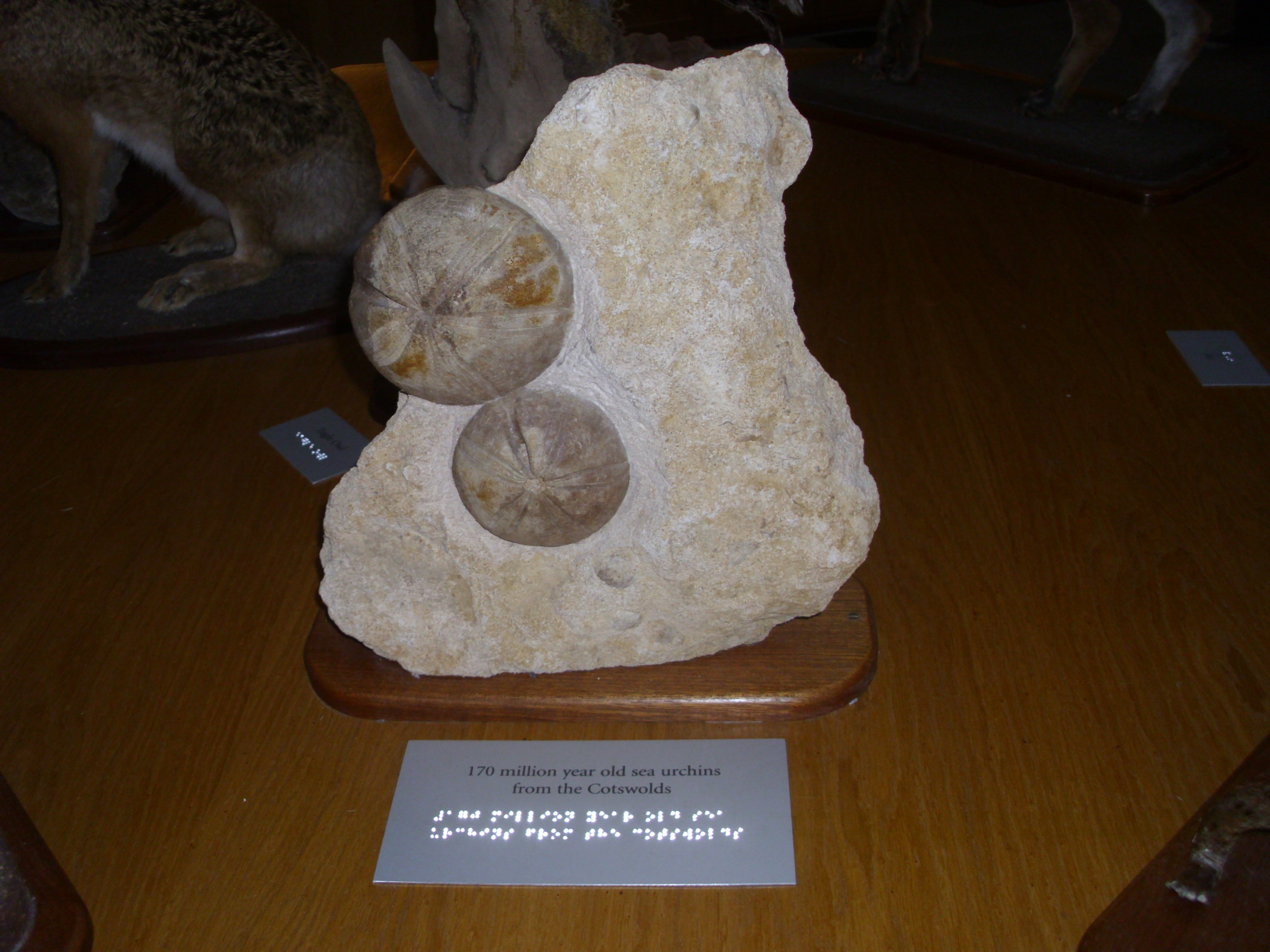 170 million year old sea urchins from the Cotswolds. Cotswold limestone is called oolite as it is composed of small rounded egg-like composed of concentric layers grains packed together. Strictly, oolites consist of ooids of 0.25–2 millimetres' diameter. Ooids are most commonly composed of calcium carbonate (calcite or aragonite), but can be composed of other materials such as phosphate, clays, or dolomite. They are usually formed in warm, supersaturated, shallow, highly agitated marine water intertidal environments, though some are formed in inland lakes. The mechanism of formation starts with a small fragment of sediment acting as a seed such as a piece of a shell. Strong intertidal currents wash the seeds around on the seabed, where they accumulate layers of chemically precipitated calcite from the supersaturated water. The size of the oolite reflects the time they have had exposed to the water before they were covered with later sediment. Cotswold stone is an ideal building material as it is soft when freshly quarried, making it easy to work and allowing for fine detail where wanted, but hardens on exposure to air, thus increasing its durability. The stone is used for house walls, field walls and house roofs. It is particularly suitable for all forms of Gothic masonry. Limestones are stratified rocks which have been formed by the building up of layers over long periods of time. In a wall the stone is best laid with its grain horizontal rather than vertical to make it more resistant to weathering. It may help if the grain is slightly tipped down towards the outside of any enclosed structure. When used for drystone field walls It was said that any holes would be big enough for a mouse but not for a pursuing cat! For setting limestones a mixture of finely crushed stone of the same variety and hydrated lime in the proportions of 4 parts stone dust to 1 part hydrated lime produces a good effective mortar. Ovals chiselled out in the stones set at the top of gable walls in some older houses are a delightful feature of Willersey houses. In a quarry the most valuable stone is that used for roof tiles. It is typically in layers at the top of the stone in the quarry. Large sheets are cut to size and then a hole drilled in the tile for an oak peg to keep the tile on the roof battern. Before the installation of roof membranes, The pitch of the roof was typically greater than 45° to encourage any water to run off rapidly. Oak timber is similar to Cotswold stone in that it is easy to work in the green state when cut down, but hardens as it slowly dries out and then oxidises over time. Oak timber weighs 44lb per cubic foot typically when seasoned. (Cotswold stone weighs about 150lb per cubic fott.) As oak dries it usually splits and curves. In most construction one would install an oak beam as an arch once its direction of curvature is known. (Just leave it to dry for six months after cutting and note which way it is curving. It never changes its mind!) Elm is another wood commonly found in older Willersey buildings. It was valued for its interlocking grain, and consequent resistance to splitting, with significant uses as floorboards, beams, water pipes and chair seats. Because of the nature of its grain it tends not bend when drying. Sadly most of the 60 million UK elm trees were lost to Dutch elm disease from the 1970s onwards. (There is a chance that disastrously our ash trees will in future be lost to Chalara dieback.) Here is an example of a straight elm beam supporting an inglenook in a Willersey house. 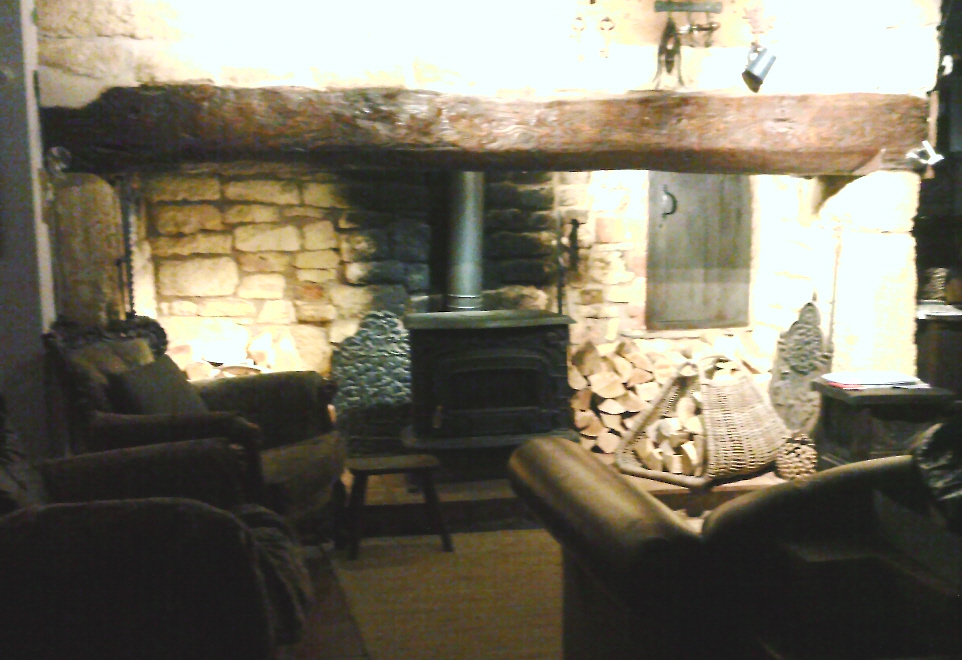 Gas was piped to houses in Willersey in about 1870. The world's first public electricity supply was provided in late 1881, when the streets of the Surrey town of Godalming in the UK were lit with electric light. This revolution did not reach Willersey till about 1935. Soon after Britain was at war and blackout regulations were imposed on 1st September 1939, before the declaration of war. The Vale soil at the lower end of Willersey is in one of Britain's most fertile growing areas. This quite large Chusan Palm growing in a Willersey Garden shows not only that the soil is fertile to produce a strong tree but also that the weather is relatively mild. The streams flowing through Willersey from the Cotswold escarpment also serve to maintain good soil moisture. 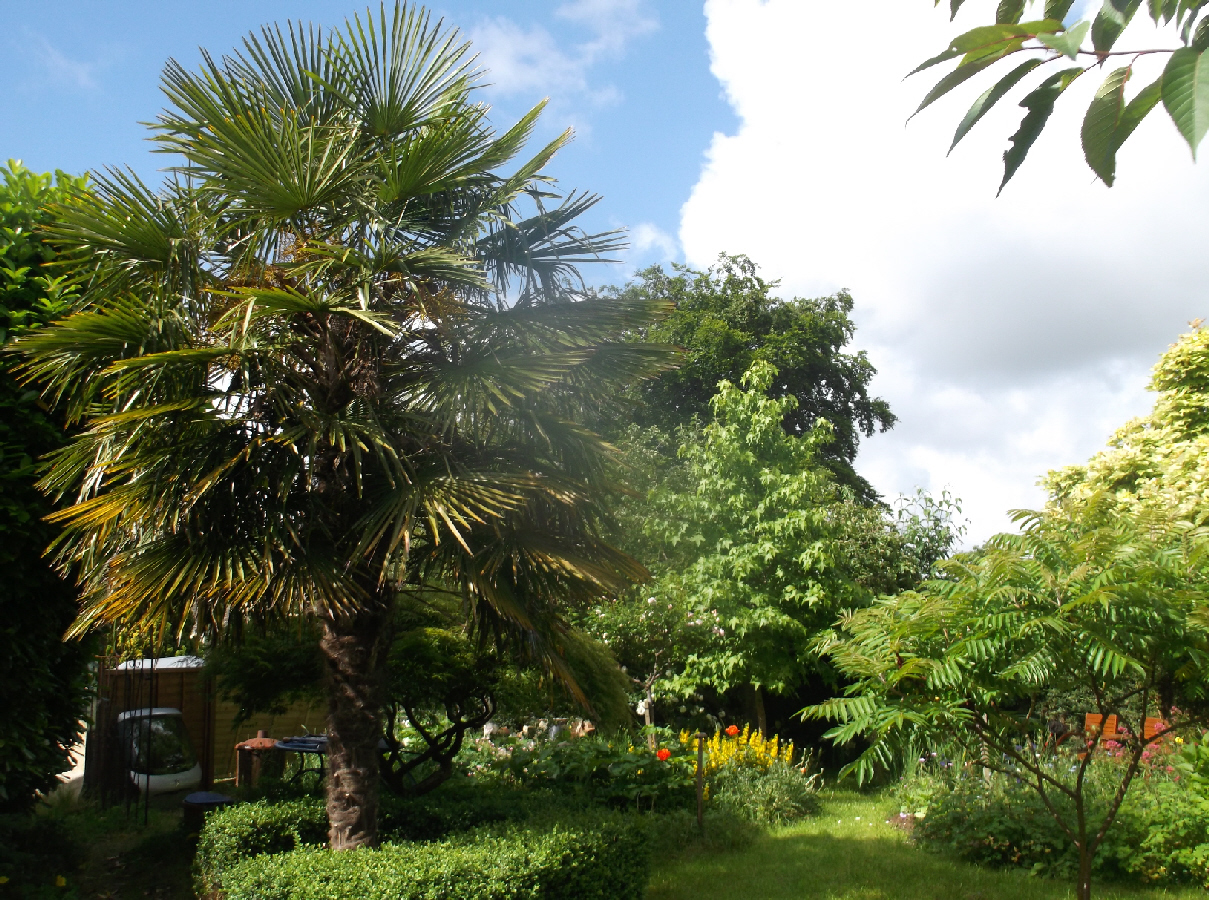 The Vale of Evesham is still a major UK centre for fruit growing and market gardening. Asparagus in particular has long been an important crop. From medieval times mostly apples and pears were grown with much of the crop made into cider or perry. This helped preserve the fruit for later (happy) consumption. Water was not always wholesome. Filed workers were often given cider at the lunchtime break. By the 19th century, plums were added as a major crop. The Benedictine Evesham Abbey was one of England's greatest abbeys. Abbot Thomas de Marleberge was not only a first rate architect who rebuilt the great tower, extended houses and renewed windows but he did much of the work with his own hands. He could preach a sermon, write a book and address a pope but could also build an altar, carve a reading desk and say glaze a window. The best monastic training cultivated mind and spirit and taught the use of pen brush, chisel, hammer, blacksmith and carpenter tools. The Abbots of Evesham kept a summer residence at the Manor House in Willersey. During the 14th and 15th centuries they enlarged Willersey Church. They added the chancel and the transept as well as building the central tower. Abbot Roger Zatton (1379-1418) designed and built the massive pillars which support the central tower. An asparagus seller and his wife outside their home, number five, Church Street. 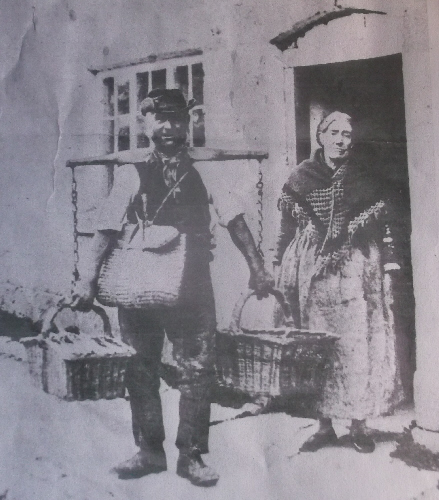 This picture shows Charles Andrews and his wife around 1900. The rush basket around his neck known as a frail, carried his food for the day. Charles married his wife when he was thirty and she was sixty. In earlier years, Charles had lodgings in Alcester where his landlady lived with a man who was not her husband. The “husband” frequently got drunk and beat her. One day Charles found her very distressed so he asked her to come home to Willersey and marry him. When his wife died at the age of 90, Charles was very sad “She's been like a mother to me” he said. This photograph was taken by the village rector at the time, Rev Charles O Bartlet. The produce of Mr Andrew's market garden included asparagus. His baskets contained some of the earliest vegetables to be grown in the Glebe ground in the village. The willow trees growing by the brook near the church were there to tie up the asparagus into bundles. Asparagus was in the past widely cultivated in Willersey. Willersey Wake was held annually in June when the gras season was over and the fair stretched from the New Inn down Main Street to Pike Cross. In about 1995 the European Union subsidised Southern Europe's larger tasteless apples to create a glut, which meant English apple trees were grubbed out with still further subsidised grants. Although the climate in England grows the best tasting apples in the world, many of the best trees were gone. England could easily grow enough apples to be a next exporter of apples. We get more golf courses now! In the 1980s the village Newsletter was produced on a typewriter so for all of the contents the only font was courier. Reproduction was using stencils on a Gestetner machine. The Rector was Walter Johnson. His Pastoral News quotes a young person's letter where she says “with a possible impending world disaster this earth could be destroyed. If it was, how would I know I have been alive mentally, physically and spiritually?” She is desperate to find a meaning to life. The Wednesday Club was going strong with a visit to Ragley Hall in June. Richard Ingles was Chairman of the Parish Council. A fox had killed three of the Aylesbury ducks on the pond leaving just one. Replacements were coming once they had hatched. The fine for parking on the village Greens was increased to £50. The rate of building in Jordans Close and Willow Road was limited to 20 dwellings per year. Elm saplings on Willersey Hill, which had escaped the Dutch elm disease would have any scrub cut around them to encourage their growth. The Mothers' Union, the Mother & Toddler Group and the Women's Institute were all going strongly. Willersey also had Brownies, Snooker Club, Cricket Club and a Slimming Group which had been going for ten months. Willersey used to have two stores. There was one in Church Street which also contained a Post Office. The other, Willersey Stores was in Main Street near to The New Inn pub. A story from Phil and Tricia Simpson: May 1984 was a big month for Tricia and me, Phil. This was when we arrived in Willersey to take on the village Post Office and shop in Church Street. Coming from Liverpool many people told us that we would not be welcomed in a country village, as the people were clannish and mistrusting of strangers. Nothing could have been further from the truth, as from day one we were accepted. True, our aggressive Scouse humour may have come as a culture shock to some, but soon it was accepted as the norm. In fact I remember a customer saying “If you ever stop insulting us we will know we have upset you!” Never having run a shop before we wondered how to approach it, and decided that the best way would be to think about how we would like a shop to be from a customer's perspective. Therefore we decided to have as varied a selection of items as possible, quite a few of which were not immediately thought of as village shop stock. However we consoled ourselves with the thought that if we put in stuff that didn't sell we could always eat it ourselves! In fact for the next seven years we lived off any stock that went out of date, and, guess what, we are still alive. We tried to make the shop a place where people would like to come, meet friends, chat, and generally enjoy the experience and we like to think we achieved this. Clearly some people may not have liked our style but as they say, “You can't please all the people etc,etc.” Willersey was a marvellous place to live, and I made it my business to go The Bell, then run by Ray and Mildred Powell, (no hardship there) to try and get to know people. My first recollection of going to The Bell is being approached by a barmaid in twin set and pearls, with beautifully styled hair and being asked in a cut-glass accent “What can I get you?” Coming from a city where the barmaids invariably looked like they had gone ten rounds with Mohammed Ali, this was somewhat of a culture shock. Nevertheless in the years to come Doreen Lawrence became good friends with Tricia and me. Over the years we developed many firm friendships in the village and most events either started or finished in The Bell. It was during one of these sessions in The Bell where, as usual, much nonsense was talked, that the subject of renewing the playground equipment was raised, specifically how the money could be obtained. Many options were explored until, realising that none of us could sing, dance or act, it was decided that we would put on a show. The first one was along the lines of “The Good Old Days”, i.e. a Victorian style music hall. This show went so well that a monster was created. Willersey Footlights was soon put on a formal footing, and as you know is still going strong today. On the spurious excuse that I had been a professional musician it was decided that I should produce the show. A decision Neville came to regret when at various times I decided I would like to blow up a toilet on stage and perform “Singing in the Rain” with real water, but he did it. Had we been able to buy the freehold of the shop we may well still be in Willersey today, but it was not to be so in 1991 we moved out, having sold to Steve and Diane Ford. After a few years in Wickhamford we moved to Devon, and in May 2007 made the big move to Spain. We live in an extremely small village in the Sierra del Segura which is about 150 miles inland from Alicante. We have wonderfully warm summers but, as we live at 1000 metres (the same height as Snowdon) we do get frost and snow in the winter. We decided that we did not want to live on the coast and our Spanish friends are most amused when I tell them I don't want to live there because there are too many English. We do, however, swallow our principles and rent a house on the coast for the winter months, and I have to tell you it is an absolute treat to go out for a walk in January without an overcoat. Living where we do we have had to learn Spanish, and while I would not say we are fluent we are able to communicate well with our Spanish friends, who are very forgiving of our fracturing their language. We are enjoying our lives here and have no thoughts of returning to the UK. Of course, we miss the friends we made, but with modern communications we can still keep in touch. In fact if anyone would like to email us at we would love to hear from you. Alternatively we are on Skype, phillip.simpson9 or if you are really feeling well off our phone is 0034 622 602311. Phil and Tricia Simpson. A story from the 1950s: When I was a young girl I used to walk to Willersey school past the little general shop with its pretty bow window, its iron railings and gate, and a fuchsia in the front garden. The shop was kept by one Nanny Franklin, an old spinster with a sharp tongue and a soft heart. I remember all those long years ago passing the shop on my first day at school. I was just five years old and of course the shop was a great attraction for my brother and me. Nanny sold all sort of things, especially sweets, and you could buy a bar of chocolate for a ha'penny. Most of the sweets were twopence a quarter. Nanny Franklin could be a bit frightening when she was cross. You could see past the counter into the living quarters and as soon as you set foot in the shop she would totter out with a sharp, “Now then what do you want? And keep your grubby hands off my clean counter.” And clean it was, squeaky clean with gleaming bottles of sweets and highly polished brass scales and weights, shining as brightly as her bright blue eyes. My brother and I, partners in crime and always up to mischief, decided to test Nanny's patience - always a risky thing to do. I, muggins was to go into the shop on our way home from school and ask for an ounce of humbuggers, a naughty word to use in those days. My goodness me! Wasn't she cross, and didn't she shout at me. “Be off with you, and wash your mouth out with carbolic soap.” I was so scared I beat a hasty retreat, my brother as usual being nowhere to be seen. When I got home I had to change my bloomers. We used to gather cowslips and dandelions for Nanny to make into wine, and she would always give us a sweet each out of one of the big glass jars. Unfortunately after she died it was never the same again. Her brother, who inherited the shop, was not so hygienically minded as his sister and it soon deteriorated and closed down. But the shop is still there with its pretty bow windows. the fuchsia and the iron railings. The railings and gate must have been overlooked when ironwork was collected during the war and melted down to make munitions. I don't think my little granddaughter would get many humbuggers for a ha'penny these days and she probably wouldn't get shouted at either! Cotswold sheep have a particularly appealing look.  Historically the fleece on the sheep backs built the wealth of the Cotswolds. The Cotswold lion sheep has long thick curly wool that is called a lustre fleece. It's got a sheen shine and a crimp. The sheep's shaggy forelock was traditionally left after shearing to enable potential buyers to feel the quality of the wool. The Romans probably introduced the forerunner of the Cotswold sheep which thrived on the local thin soil limestone slopes in the mediaeval heydays of wool. Some half a million Cotswold lions grazed the hills and merchants reaped immense riches from trade and exports of the golden fleece. Hundreds of local people became involved in the wool and cloth trade. Many took their family names from the job they did within it. First there were the farmers who provided the wool from the sheep. Then the wool sorters who did what their name implies and the wool combers combed the wool that had been set aside for the spinners and to be the warp thread on any looms. The gigger prepared the wool that was to be the weft The seamer oiled the wool prepared by the gigger and the spinner made the wool into yarn Then the scourer who cleaned the grease out and the winder who wound the wool prepared by the wool combers on to bobbins. The warper took the wool off the bobbins and put it into chain lengths which the papper dipped in size. The weaver then produced the cloth and another series of workers took over. The fuller took the new cloth and thickened the fabric using Fullers earth. The rougher used teasels which he scratched the cloth to give it a nap and then the drier or stretcher hung the cloth out on tenters in the fields. Tenters were very sharp hooks on wooden frames to which the cloth was attached to pull it into shape and to let it dry. These were very sharp hence the phrase "Being on tenterhooks." Weavers houses had larger windows for light and fullers near water which was needed to wash the cloth. Following changes in cloth manufacture during the industrial revolution demand for long wool breeds like the Cotswold fell and flocks dwindled. The Cotswold sheep is still categorised by the rare breeds survival trust as at risk. However thanks to a few dedicated people the number of females registered has now risen to one and a half thousand. The lustrous fleece is in demand among hand spinners. It can make an extremely fine silk like thread. The landscape was formed and shaped by sheep over millennia from the Celts, through the time of monasteries to 150 years ago. Not only were the fleeces valuable but sheep provided dung to improve soil fertility, sheepskin, tallow, milk and meat for eating. Tallow can help preserve food, keeps for a long period, can be eaten, makes candles and soap, softens leather, can be used as a soldering flux and act as a lubricant. Most of the Cotswold churches were built on the profits of wool. At its height, the wool trade dominated the English economy and the Cotswolds represented about half of this wealth. Wool prices reached their highest level in 1480. The profits from wool reduced over the years because of competition from other countries such as New Zealand, growing popularity of cotton and other fibres. In time synthetic fibres such as viscose, nylon, acrylic and terylene also entered the market. Those beautiful Cotswold churches and other buildings are now very much part of the reason that tourists visit the Cotswolds. In July 2020, the cost of shearing a sheep was greater than the value of the fleece. Sadly many farmers just composted the fleeces. Wool is a natural, renewable and sustainable material. Wool fibres present no hazard to human health. The fibres are breathable and absorb & desorb moisture without reducing thermal performance, which make them a perfect insulation material. It absorbs noise and reduces noise levels. Hopefully the greater awareness of local products after covid19 will mean than new markets are found for wool such as ecofriendly insulation and non plastic packaging. It can also be used to reinforce cement-based mortars and bricks. It is used as a weed suppressant on grape vines and it is used as pollution barriers on watercourses and could be outside cladding for high rise buildings. What happened to sheepskin coats? Willersey straddles the Broadway to Stratford-upon-Avon minor road B4632 and will hold the attention of all who love old houses. Its manor house was home to the Roper family, William Roper becoming son-in-law to Sir Thomas More. In 1577, Queen Elizabeth I granted tithe land in the village to composers Thomas Tallis and William Byrd. The Vestry in St.Peter's Church and an exploded myth. On the floor just inside the vestry (to the south of the chancel) is a monument to Anthony Roper. A local tradition is preserved in the 1960 guide book (extracts from which form the leaflet about the church, still available by the north door). This tradition states that he was a descendant of an Anthony Roper who was a landowner in the time of Queen Elizabeth I. Sir Thomas More, who was involved in the religious difficulties of the time and was beheaded in the Tower of London, married a daughter of that Anthony Roper? Wrong. Sir Thomas More's daughter Margaret married a William Roper. There may still have been a lineage connection between More's son-in-law Will Roper and the Anthony in Willersey vestry. The Church of St.Peter is famous for its peal of six bells, cast in 1712 by Abraham Rudhall. An inscription on the tenor bell reads 'Ring for peace Merily' to celebrate the signing of the Peace of Utrecht. At the 2019 Willersey Show, from left to right, Beccie Williams, Richard Lewis-Skeath, Peter Kavanagh, Chrissy Wainwright and Bob Topp gave a handbell performance in The Bell. Our War Memorial stands at the entrance to St. Peter's. It was designed by F. L. Griggs of Chipping Campden and was erected in 1920 by Jewson and Berkeley of South Cerney. The panels bear the names of the fallen in both the 1914-18 and 1939-45 World Wars. Although famous names are part of our history, it is also about the lives of ordinary folk who worked in the fields of Willersey and were baptised, then married in St Peter's and were finally buried in the churchyard. For villages with an historical centre and conservation area such as Willersey, you can still see many of the sights and houses which were seen by our predecessors in the past. The First English Civil War from 1642 to 1646, was a series of armed conflicts and political disagreements between Parliamentarians and Royalists in the Kingdom of England over principally, the manner of its government. Chipping Campden declared for the King whilst the Vale of Evesham supported Cromwell's Parliamentarians. The Cotswold escarpment acted as a natural dividing line between the two groups. As a result, clashes between both groups took place both on Dover's Hill and on Willersey Hill. The last Royalist army was defeated by Sir William Brereton at Donnington near Stow-on-the-Wold in 1646. Dover's Hill later became the site of the Cotswold Games which included competitions such as horse riding, skittles, quintain, wrestling, cudgel-playing, coursing, cock fighting and more painfully, shin kicking. Other competitions over the years were football, quoits, shovelboard, cudgel & single stick bouts, wrestling, racing on horseback and on foot, throwing the hammer and hare coursing. The games are said to be the forerunners of the modern Olympic games. Robert Dover opened the games riding on a white horse and firing a cannon from a mock wooden castle erected on the hill. The games started in about 1612. The games were stopped in 1644 by the Puritans, revived after the Restoration and finally stopped in 1852 when they had become mostly a drunken orgy. They were revived after the War on a small scale on the Friday after Whit weekend. They hopefully will run again in 2018. The principal Willersey landowners in 1897 were Robert Newton Chadwick esq., the Right Hon. the Earl of Harrowby P.C. and Sir Francis Salwey Winnington bart. of Stanford Court, Worcester, who was Lord of the Manor. Willersey Methodist Church was founded in the 19th century, and belongs to the Stratford & Evesham Methodist Church Circuit. Its building is part of a row of five 17th century cottages. The three cottages on the right were substantially altered during the 19th century to create the Chapel. The whole is Grade II Listed. Currently Willersey has two pubs, The New Inn and The Bell Inn but like many UK villages it had other pubs in the past. The Fish Inn and the Dormy House hotel on the Farncombe estate appear to be in Broadway but they are technically in Willersey. At one time there were eight pubs in total. The Unicorn was based in the two houses on the left as you enter the Churchyard opposite the Old Rectory. When the pub ceased operation it was divided into two houses. (Many pubs used be near to, or owned by the Church.) 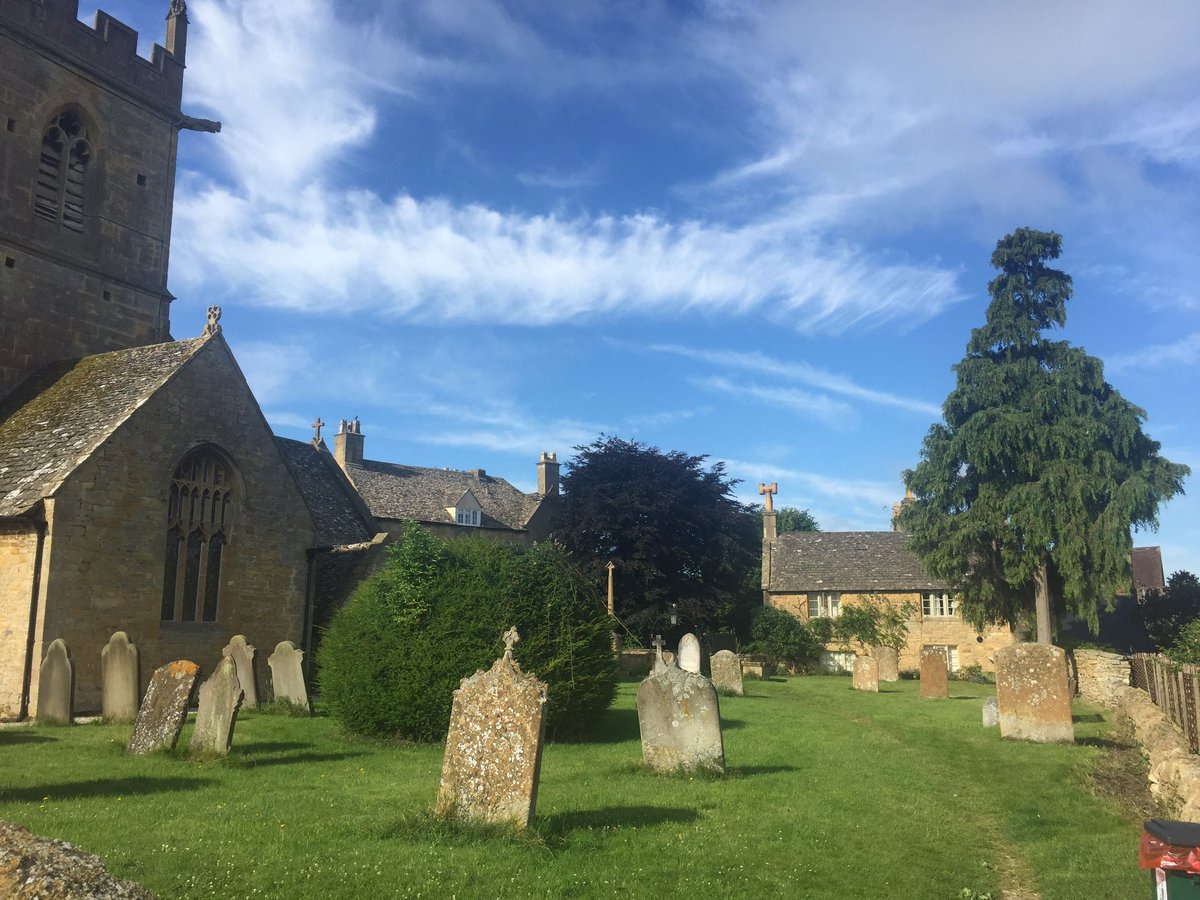
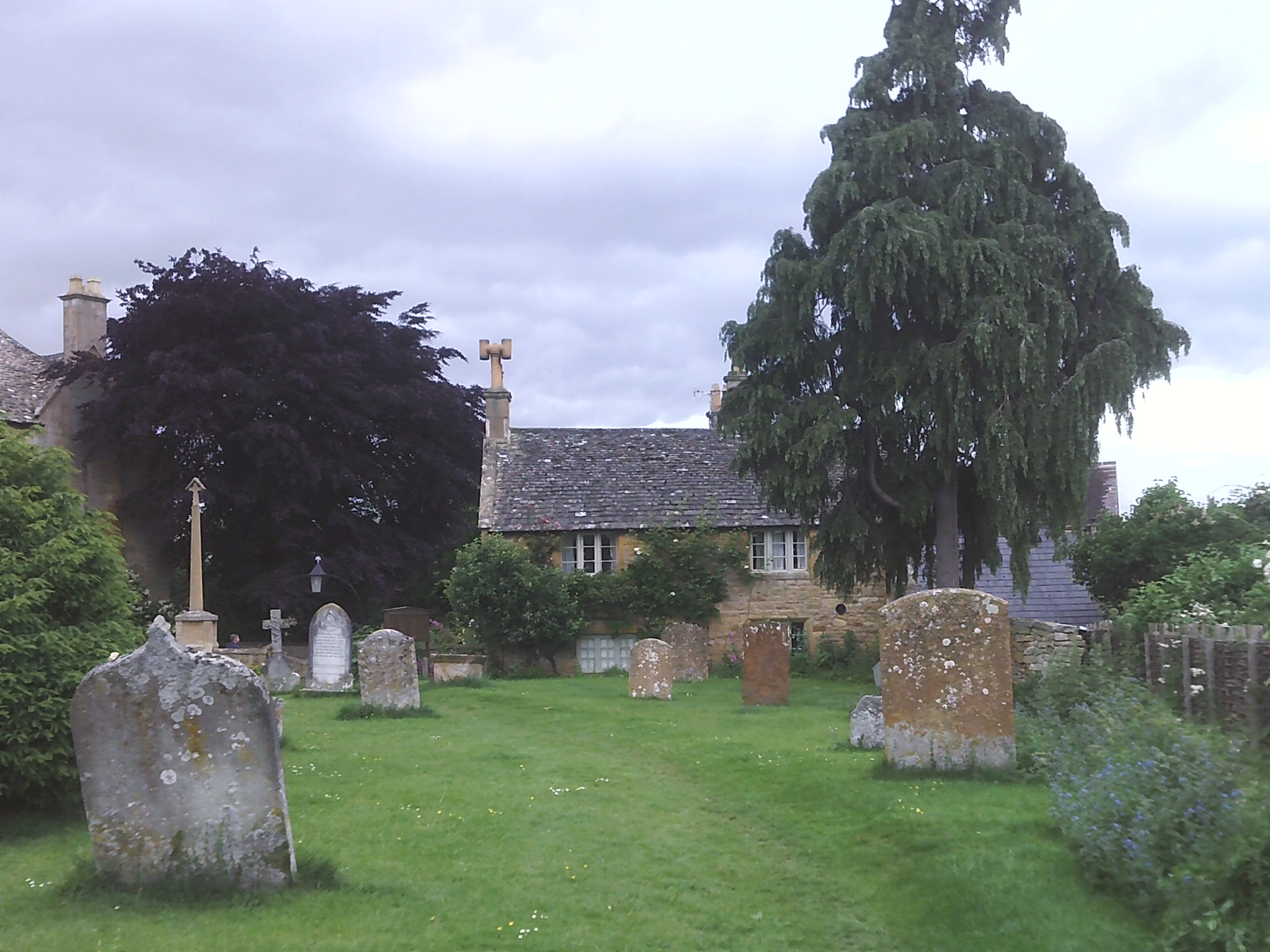 There was an off-license at number 6 Church Street. There was also an Inn known as the Rampant Leopard or Ranting Cat down in some fields off Badsey Lane. Other Ale Houses were in private houses. The English pub is an organic part of a thriving community. It takes many years to develop on an English soil whose many troubles have fortunately been fewer in number than those of neighbouring lands. Go to top In 1930, H J Brassingham wrote: “Willersey is proper Cotswold. Bell Inn, duckpond, barn church with its nice square dump of a four-pinnacled tower and true old barn-houses are grouped about the green like casual knots of worthies delivering crop-gossip or weather-lore through the procession of the years.” The Jubilee Tree was planted in 1935 to celebrate the May 6th Silver Jubilee of King George V. It is on the site of what was a blacksmith's shop. 
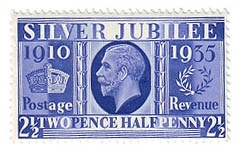
The plate above was removed from the base of the tree when the seat around the tree was renewed. The tree is opposite the duckpond and is a natural meeting point. It is a red horse chestnut (Aesculus × carnea) which fortunately does not suffer from the leaf miner caterpillar which is attacking the usual cream flowered horse chestnut trees in the UK. The usual Chestnut trees have seven lobed leaves but the red flowered trees have five lobes. The leaves are slightly glossy and a little thicker. The Willersey Jubilee tree has a surprising number of four lobed leaves. The seat around the tree is the third one to be placed there and was put up to celebrate the 1981 marriage of Prince Charles and Princess Diana. The village buses stop at the tree. Once a year at Christmas the tree becomes a tree of light. 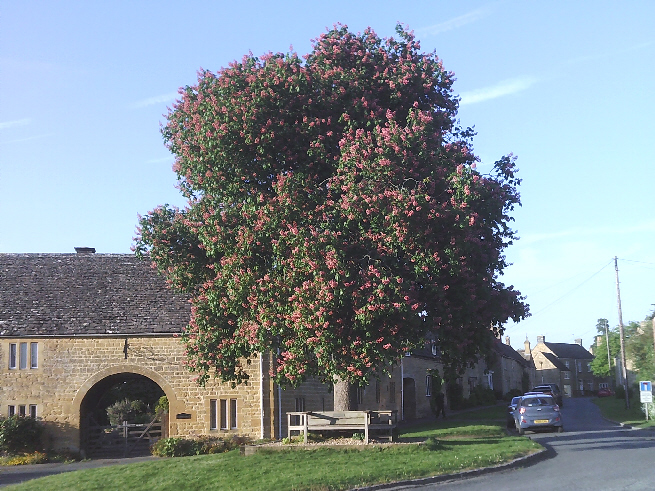
Willersey had a halt station on the Great Western Railway which was opened in 1st August 1904. 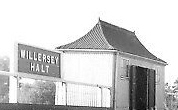
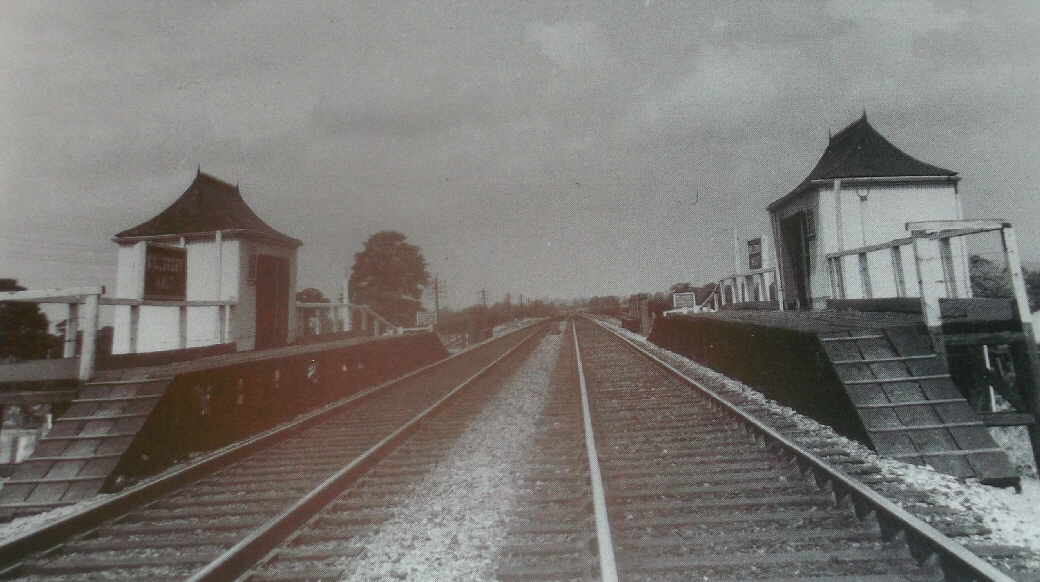 It was situated about half a mile from the village centre which was closer to its community than many stations on the route. It had two 152-foot wooden platforms, each with a corrugated iron pagoda style shelter. No sidings or facilities were provided. The initial service consisted of 9 Down and 8 Up services a day. The line was closed by British Railways to passenger traffic on 7th March 1960 and completely in August 1976 whem a derailed coal train badly damaged the track at Winchcombe. Later in August 1976 at a meeting in Willersey Village Hall the Gloucestershire Warwickshire Railway Society (GWSR) was formed to persuade British Railways (BR) to reopen the line. This failed but after much dithering and having lifted the track, BR offered the land for sale in 1980. Passenger train services began again in 1984 and since then a team of enthusiasts have reopened the line as a heritage steam service, connecting from Toddington to to Cheltenham. It has now in 2018 been extended to Broadway. They have future plans to eventually reconnect to Honeybourne and the main line between London and Hereford, which could in time give Willersey its halt back. 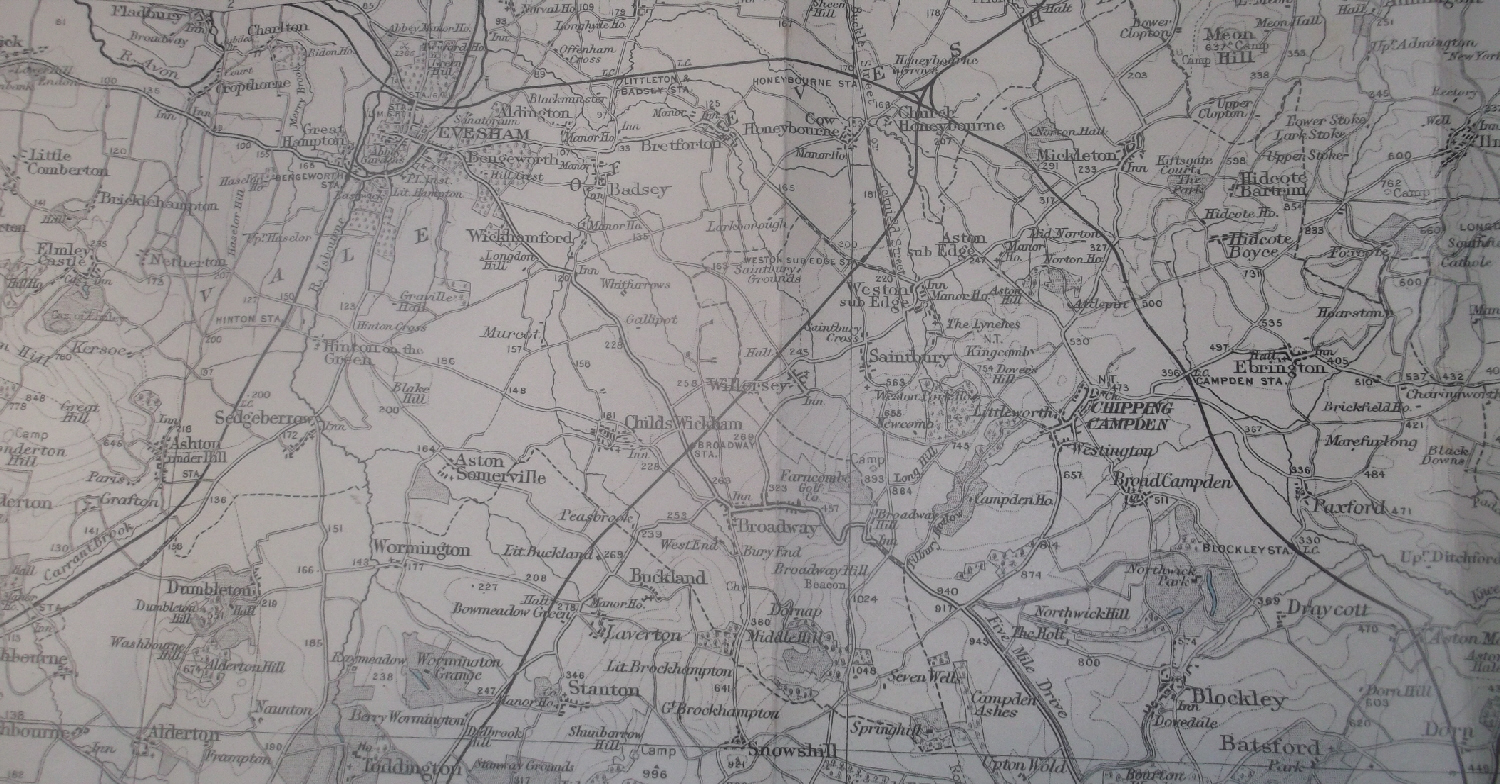 On this map from the 1930s it is possible to see the route of the train line from Cheltenham to Stratford-upon-Avon via Honeybourne. There were stations at Broadway (being rebuilt), Willersey, Weston sub edge, Littleton & Badsey, Blockley and Chipping Campden. The Broadway bypass on the A44 did not exist so all traffic went through Broadway High Street. There were no motorways. As Evesham did not have the A46 bypass, the A46 went through Willersey, but traffic was much lighter in those days. The original A46 is now the A4632. This change was caused by the opening of the Evesham bypass in 1987 which in time took on the function and name of the A46 and also the Broadway bypass in 1998. (Here is a larger version of the map with more detail). Before the coming of the enclosure act in 1773 and the consequent establishment of turnpike roads, one of the major local routes went from Ebrington to Chipping Campden and then down Campden Lane to Willersey. Most traffic before 1675 was on foot or horseback, so the direct routes were always the most suitable. Willersey features in the world's first set of road maps, on a route between London and Montgomery in Wales, published by Ogilby in 1675. The route runs through Broad Campden, Chipping Campden and Willersey Hill, through the village and along Willersey Lane into the bottom end of Badsey. 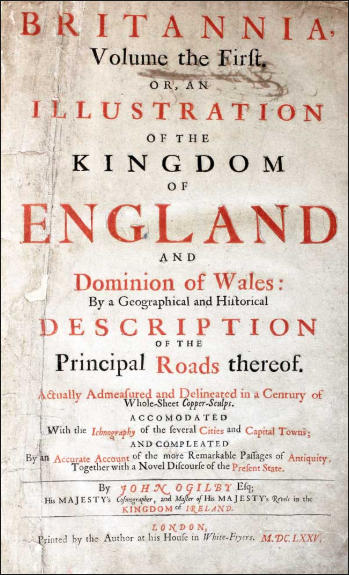
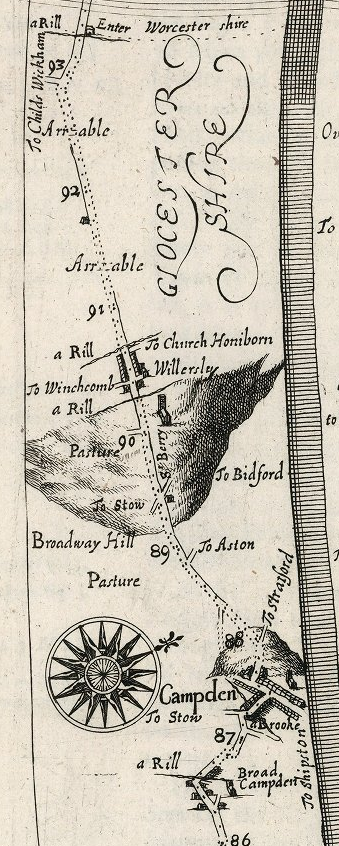 There was an old bridge at Twyford in Offenham until the mid/late 1600s. It is featured on the Tapestry Map in Oxford. The route from there ran to Bretforton and then, presumably, Buckle Street. This bridge was used by both armies during the English Civil War so it is likely that they travelled through Willersey in addition to Fish Hill. After these maps were published more wheeled vehicles appeared, and that's when the routes started to move away from the steeper hills up the Cotswold escarpment, especially when the original serpentine route [no longer used] up Broadway Hill was introduced in or around 1777. The turnpike route down Broadway Hill was later considerably improved with extra bends so that over time it became the route of choice to the Vale of Evesham and beyond. Here is a sample of ideas from the past and examples from modern technology which have tranformed our way of life. Not all are agreeable. Take a selection of them away however and the world, and a number of countries, including the UK would be very different.
During construction work in 1968 at Hill Farm, Romano-British artefacts were found. Near a stone-lined grave containing two skeletons were 56 silver coins of the 4th century and a silver ring. The ring and two coins are now in the British Museum and the other coins are in Cheltenham Museum. They were declared treasure under the Treasure Trove act and sent to the British Museum for cataloguing. Once a valuation was agreed, the Art Gallery and Museum agreed to purchase the hoard. This purchase did not include the silver ring, or two of the coins, which were retained by the British Museum. The hoard of coins dates to the mid-4th century AD and is mainly comprised of siliquae, a late Roman silver denominations. 21 of the coins belonged to the reign of Constantius II, while the remaining 35 coins belonged to the reign of Julian II. Overall the coins date to around AD 350–363. As the coins were discovered during building work it was too late for proper archaeological investigation to be carried out, so some details about their burial have been lost. As the coins survived in the ground in good condition, it is likely that they were initially buried in some sort of container that helped preserve them. If they were buried in organic material, such as a leather bag or cloth purse, little of the container would have survived. It is difficult to put a value on how much these coins would have been worth, as we only have records of the cost of living in the Roman Empire at specific moments in time. The Roman economy was also prone to inflation and experienced much monetary reform. The best guide of prices for the later Roman Empire date from the price edict of Diocletian in 301 AD, but this was 60 years prior to the Willersey hoard being deposited. Trying to compare prices over this time period is difficult; just think of the change in the cost of living from the 1960s to now! Nevertheless, the hoard would have amounted to a considerable sum of money in later Roman Britain, and probably came from someone who was comfortable financially. Willersey is on the walk known as the Donnington Way. A short section of this from St Peter's leads to Saintbury, a small hillside village with a beautifully sited church of great interest and several wonderful stone cottages. Sadly the church of St Nicholas is not in regular use so it is in the care of the Churches Conservation Trust. In the porch there is a contact number to ring if you wish to arrange an internal visit. Go to top The Gissing Journal of October 2002 gives a useful snapshot of life in Willersey during the years near 1900. In his 1904 book about Broadway, Algernon Gissing notes that although the Cotswolds are pastoral they had a notoriety for occasionally rearing a ferocious type on inhabitant. The outlet for this ferocity were the Cotswold Games on Dover's Hill when quarrelsome natives harboured their grudges where a certain muscular satisfaction was required to settle old scores which they would scorn to bring to the Courts of Law. Algernon Gissing also wrote The Footpath-Way on Gloucestershire , published in 1924 by J. M. Dent & Sons Ltd. It was reprinted in 2009 so it is still available. It contains many historical details about Willersey and Saintbury as well as painting many pictures of life in both villages. Here is a short example:- On St Thomas's Day, December 21st, bells were rung in the early morning (and still are) and it was the custom to give alms in money or kind to the poor of a parish. Please to remember St. Thomas's Day, St Thomas's Day is the shortest day, Up the stocking and down the shoe. If you an't got no apples money'll do, Up the ladder and down the wall, A peck o'apples 'll serve us all. Historically Town Criers were the original newsmen. Before people could read, Town Criers brought the news to the people, and served as spokesmen for the King. The Town Crier would read a proclamation, usually at the door of the local inn, then nail it to the doorpost of the inn. The tradition has resulted in the expression “posting a notice” and the naming of newspapers as “The Post”. Announcements are always preceded by the traditional “Oyez Oyez Oyez" (which is “listen" in French) and conclude with “God save the Queen”. Until the first world war, in the early hours of Christmas morning, the town crier called out to Willersey's villagers, “Arise, arise, ye good people arise. Make your plum puddings and your mince pies.” There was then a weather report, a time reminder and another reminder about thw crier when he can round for his Christmas box. Parish meetings, local events and "Master Tom's Tater-griner be lost.” could also be announced. Such were the days before the internet! I Jessica grew up in this small village called Willersey which is about 30 miles from Oxford and located slightly north-west of London. The village is inhabited by fewer than 1000 people in 2020 and has a school, bistro cafe, petrol station, recreation ground, industrial estate and, more importantly, two pubs. The pubs are popular with local walkers and tourists on road trips who want to stop and sample the local ales and cider, as well as having a bite to eat. I'm part of the fifth generation of my family living here - and that's not unusual! All my pictures of Willersey's famous duck pond sadly had no ducks present at the time. In October 2003 the Bledisloe Plate, recently awarded to Willersey, was presented to the then parish council chairman, the late Maurice Andrews MBE by the Council for the Protection of Rural England chairman, Judge Gabriel Hutton. The village has now won the Best Kept Village Cup nine times and the Plate twice and those villagers assembled for the event were congratulated by Judge Hutton. Maurice Andrews replied and thanked all the residents for making the success possible. In 2005 Willersey celebrated its success as the first Cotswold Life village of the year winner with a spectacular village fete held on August the 20 On Friday July 20th 2007 Gloucestershire's schools broke up for the summer holidays. It was no real surprise when the county woke that morning to heavy rain and warnings of more torrential downpours on the way. No one dreamed that morning that Gloucestershire was on a brink of a truly devastating natural disaster or that this July deluge would make history by triggering the county's biggest ever peacetime emergency. In Willersey 36 houses were flooded with 2ft of Water. All roads into the village became impassable causing people to abandon cars and stay in outlying village halls or scout huts. The Bell Inn put 38 people up overnight. Work has now been done on the village drains so a repetition should be unlikely. In November 2009 rain failed to dampen the spirits of 21 Willersey residents who donned their Wellington boots and took up their shovels, rakes and wheelbarrows to clear ditches in a bid to reduce the risk of flooding within the village. The Willersey Stream Team, cleared tons of silt and rubbish from 500 metres of ditch running from the village's recreation ground to a culvert under the disused Cheltenham-to-Stratford railway line. Over the years there can quite dramatic changes in a village. The left hand picture shows two houses about two hundred years ago while the right hand picture shows the same scene now but with just one house! 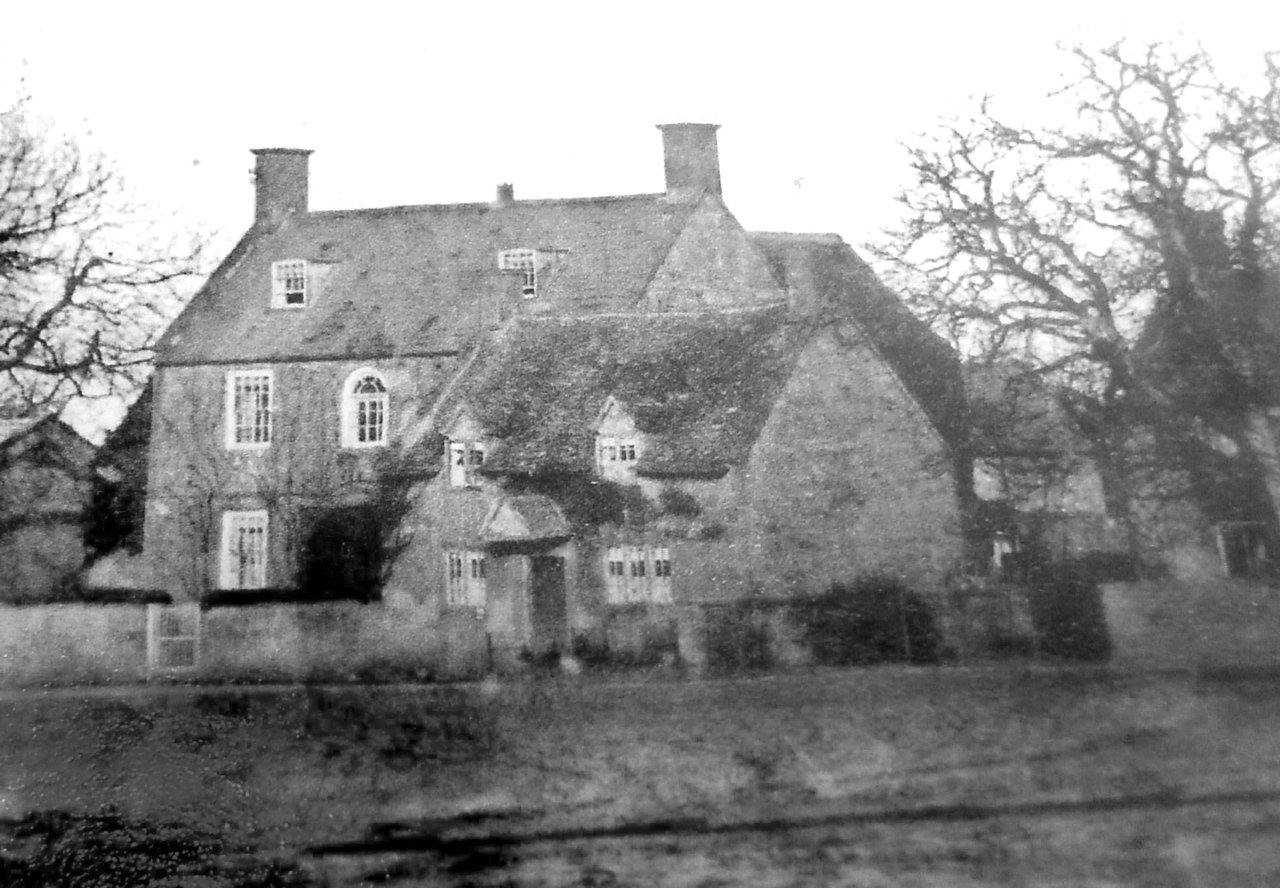
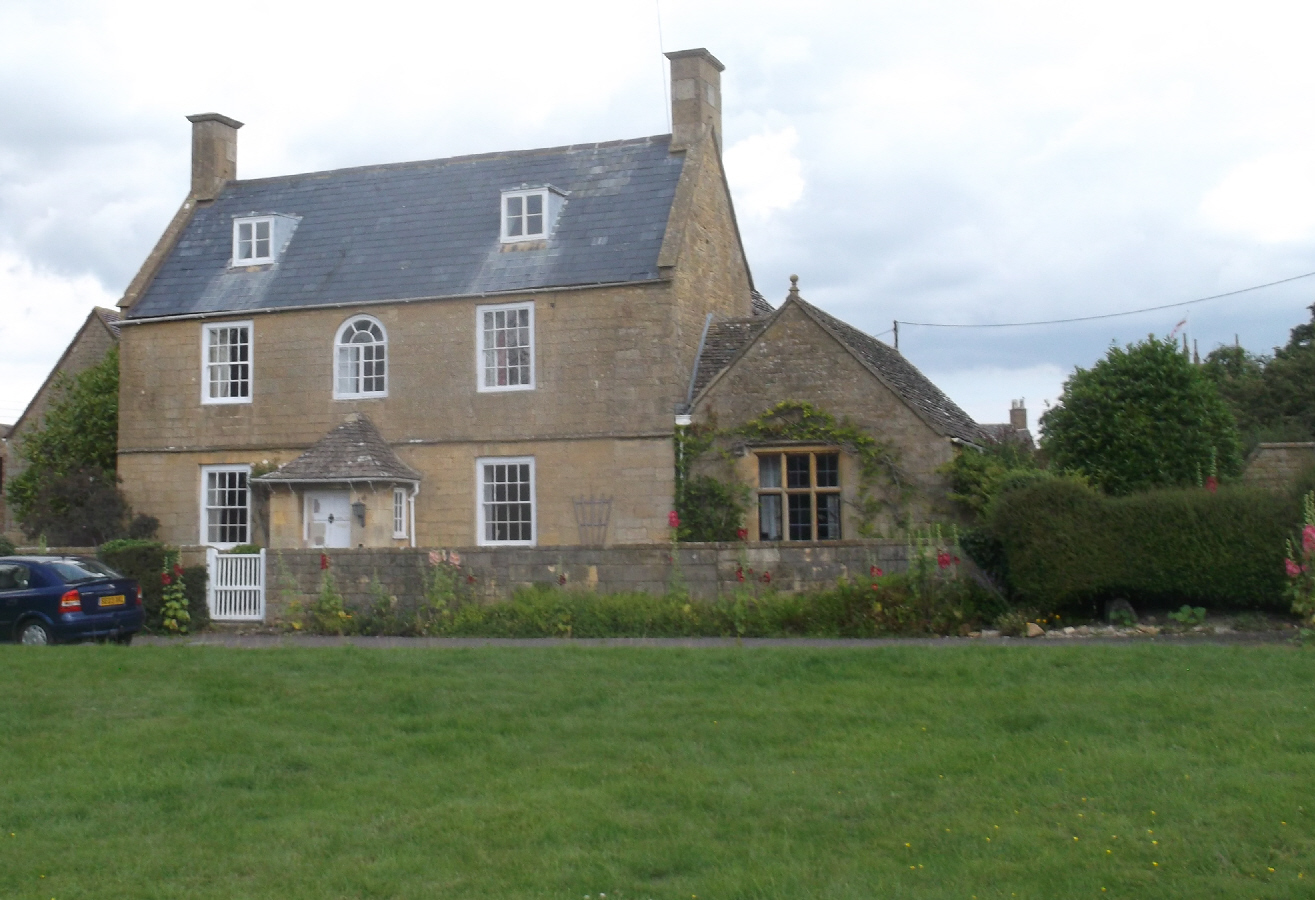 Here is another example where a house to the left of the New Inn no longer exists. (It is now the entrance to the car park.) 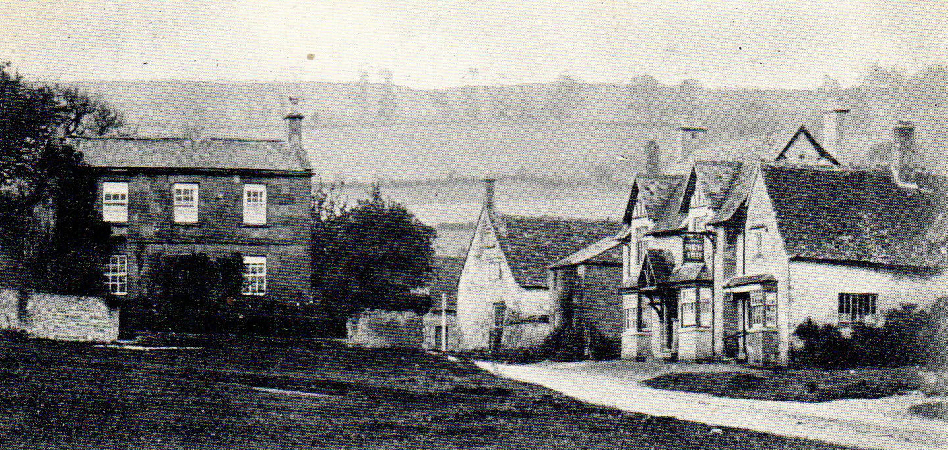 The brick wall in front of this house was removed and reconstucted as a stone wall closer to the road thus making the front garden larger. 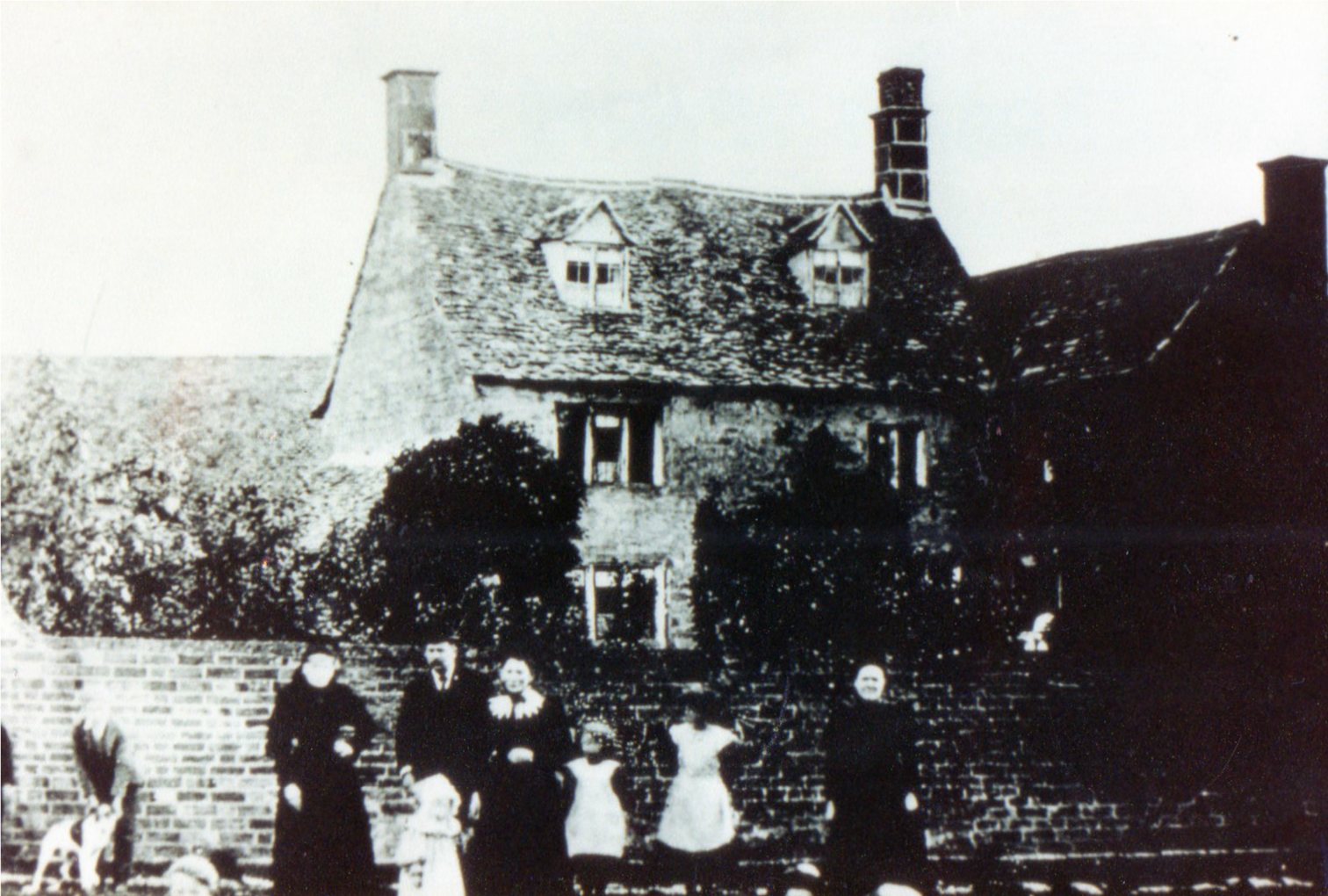 The same house has now been extended, the roof is tiled, chimneys rebuilt, dormers changed and television aerials added! 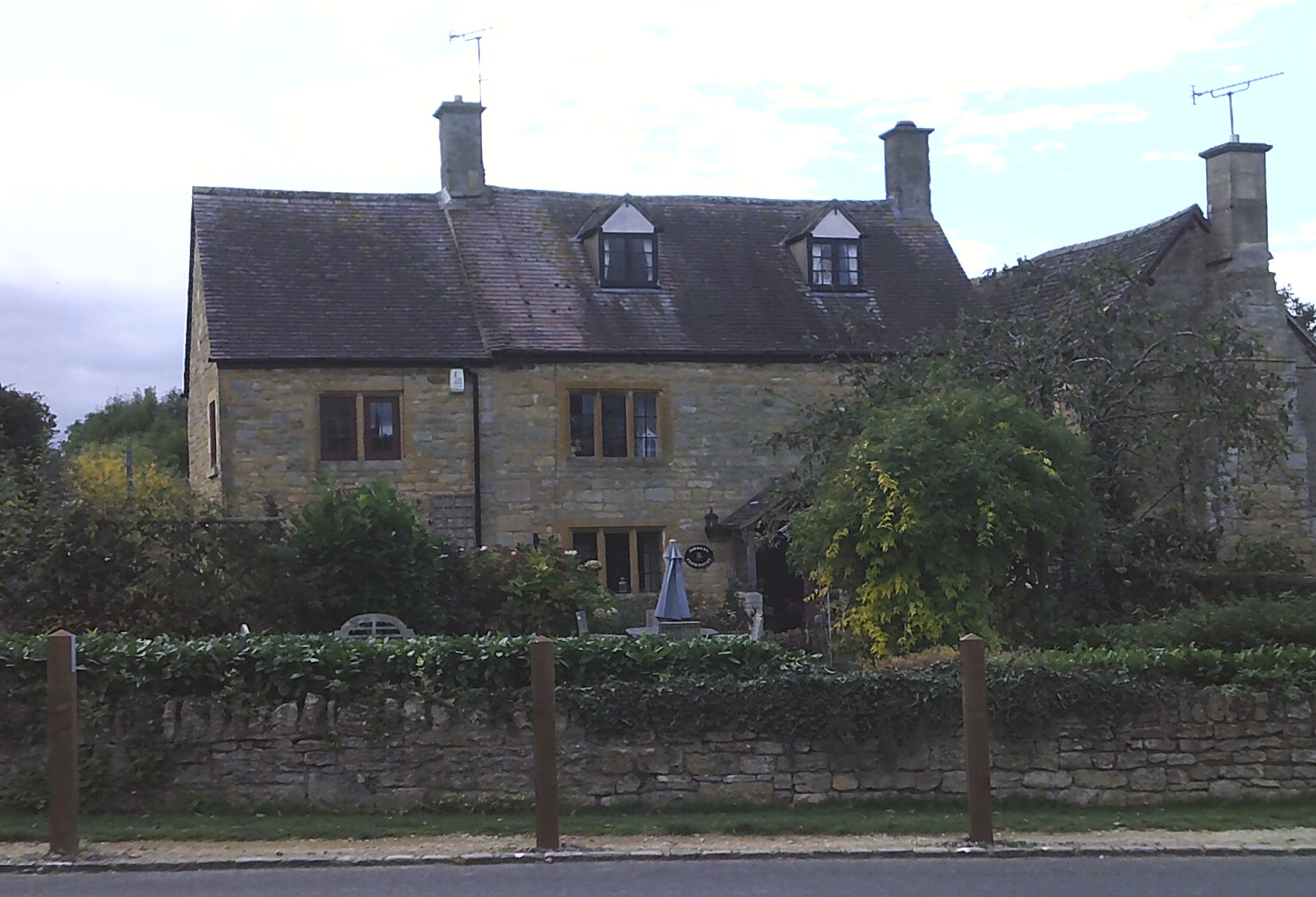 Here is a view of part of Main Street from 1960. There are now more trees in front of the Garage and three silver birches on the Village green. 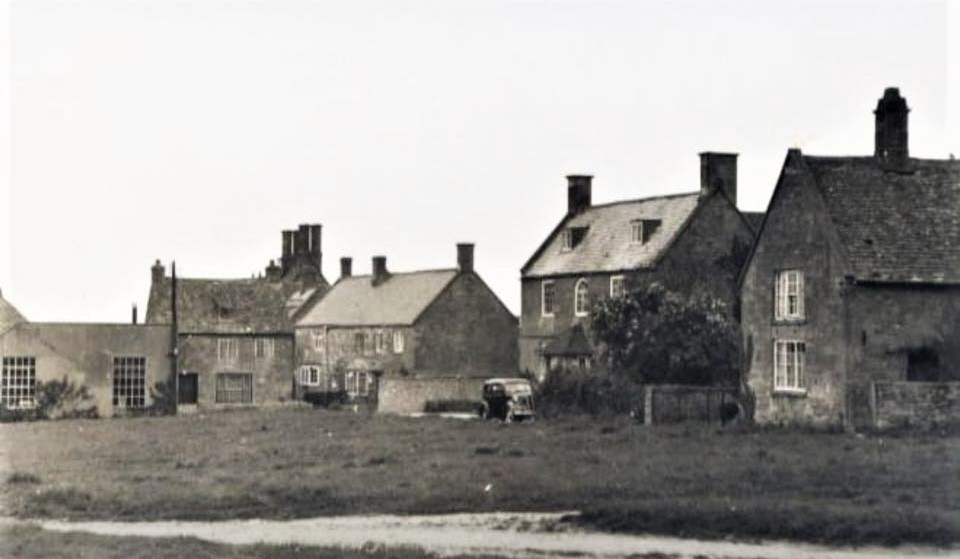 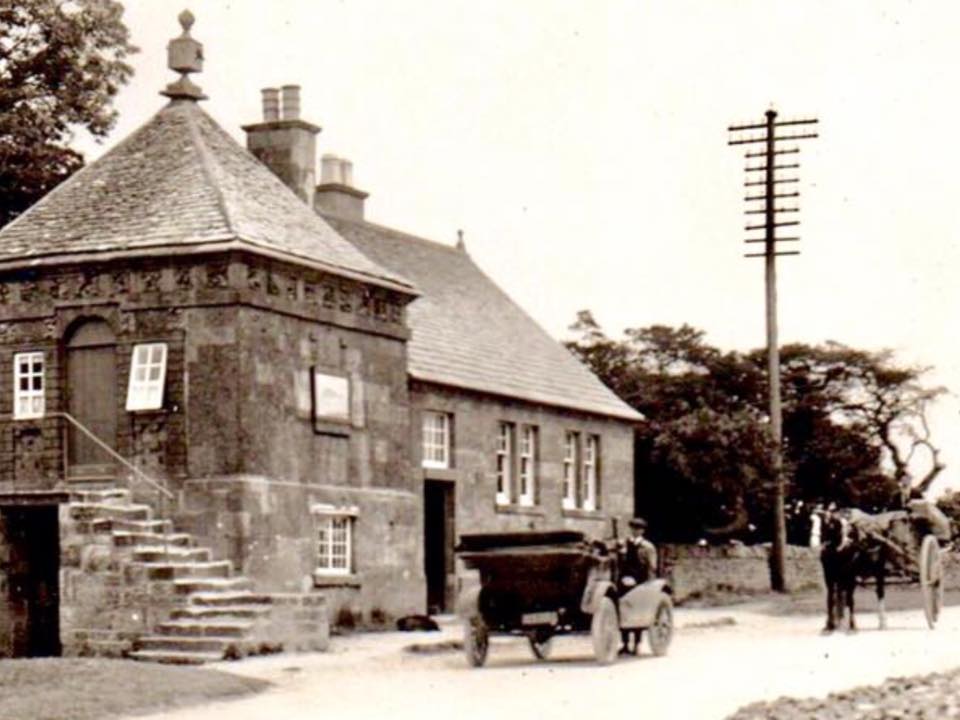
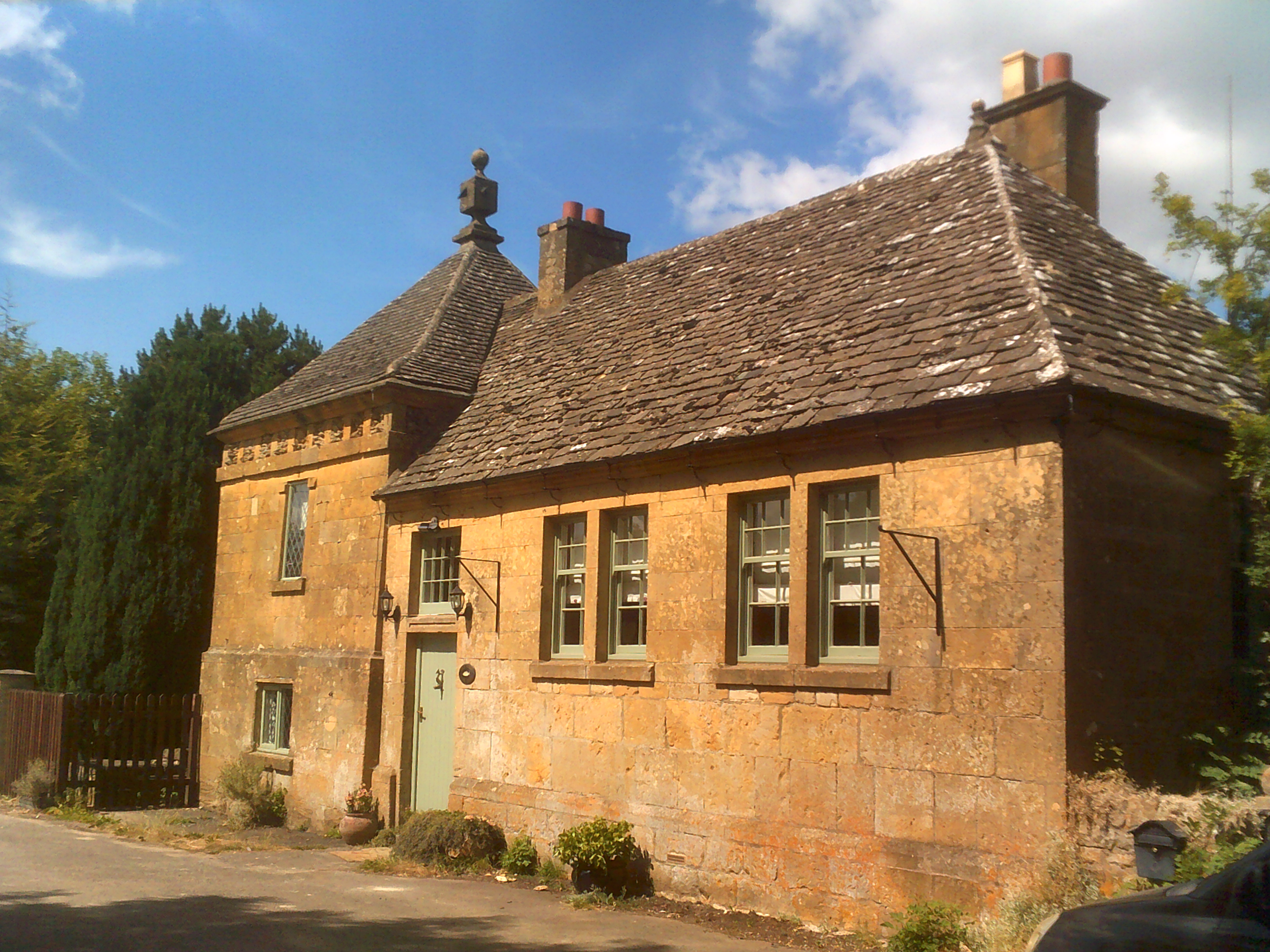 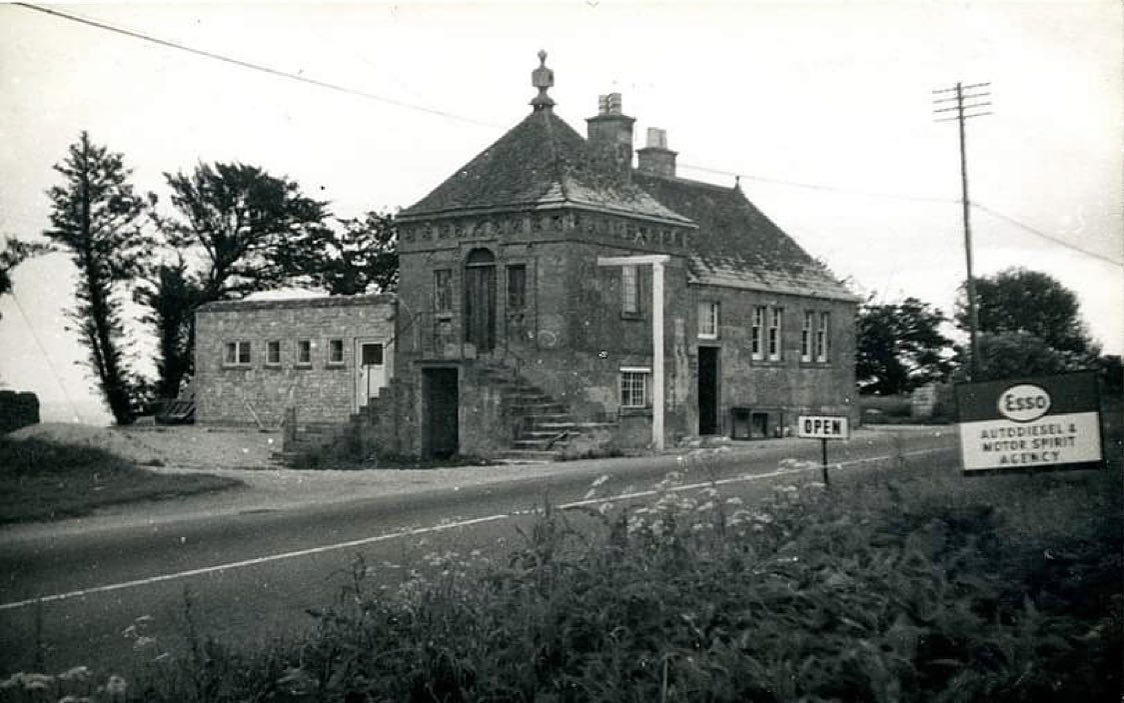 The historical Fish Inn is located at the top of Fish Hill in the odd triangle of land which is part of Willersey. It is now a Grade II private house. Although in the civil Parish of Broadway, it is in the Church of England Parish of Willersey with Saintbury,/i>. Its Grade listng description says it is a summer house, later a public house and is now a house. It was designed by the squire of Weston sub Edge to enjoy the majestic prospect of the Severn plain flanked by Bredon and Cleeve Hill. It is said to be constructed in 1771, with late C19th additions - limestone ashlar with roof of tile and stone slate. The earliest part of the building is the square plan tower with pyramid roof, a frieze with rubble metopes, and a moulded cornice. The North-west wall has stone steps rising in two flights to a rusticated Venetian window which has a doorway within the middle opening and engaged balusters below the outer lights. Below is a ground floor doorway. At the apex of the roof is a square stone vertical sundial. It was originally built as a summer house on Sir John Cotterell's estate. Fish Hill is so called because it was where apparently monks used to cultivate fish in ponds. Most monks were not allowed to eat meat so they cultivated fish for eating instead. In 1893, the Rectory was covered in ivy, had a large tree in front of it and a porch. In 2017, the porch and the tree have gone. One chimney is shorter and probably not in use. Willersey War Memorial is now in place. By 2021 new owners have modernised the front. The shrubs and the surrounding trees have been cut back. A new wall has been constructed in front. 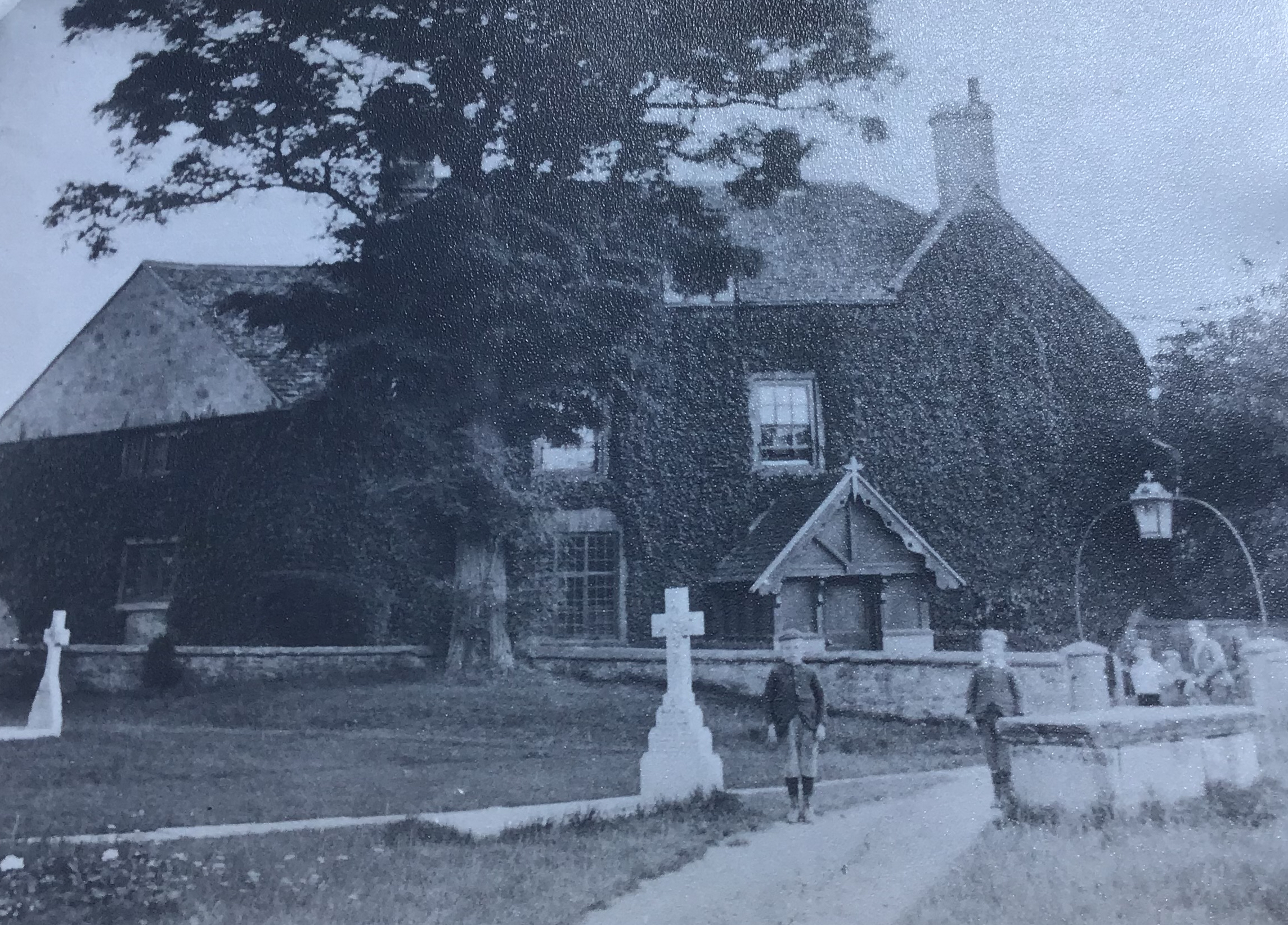
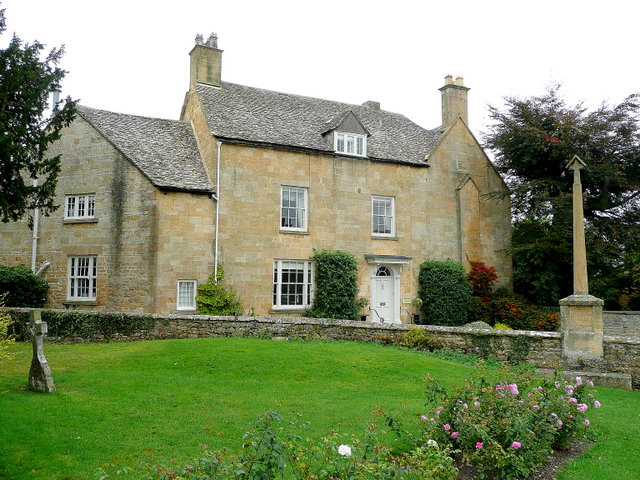 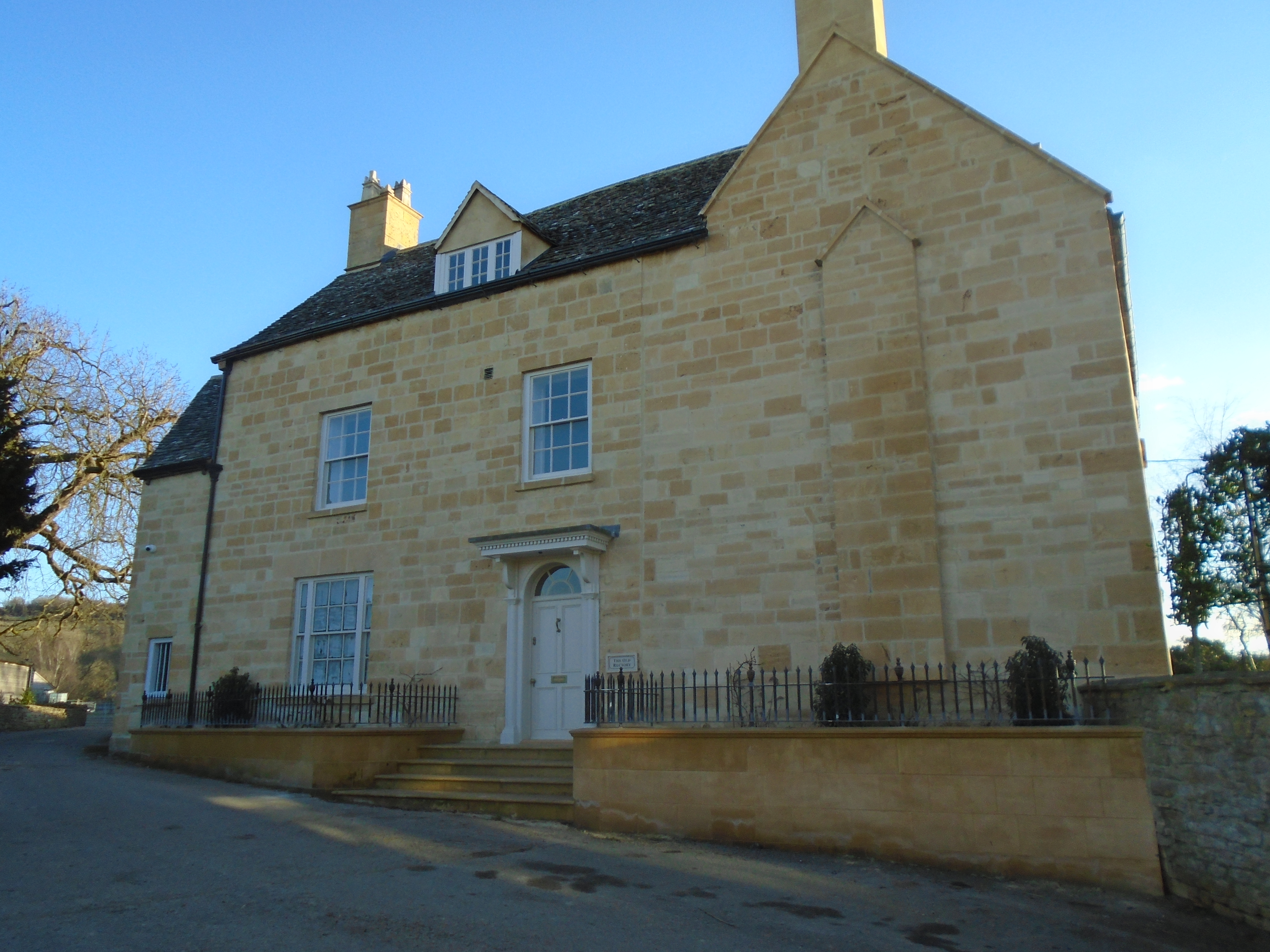 In 1870-72, John Marius Wilson's Imperial Gazetteer of England and Wales described Willersey like this:- Willersey, a parish, with a village, in the district of Evesham and-county of Gloucester; 3½ miles W of Chipping-Campden railway station. Post town, Broadway. Acres, 1,344. Real property, £2,522. Pop., 373. Houses, 88. The property is much subdivided. The living is a rectory in the diocese of Gloucester. Value, £180.* Patron, the Rev. J. H. Worgan. The church is good. The 1843 Great Fire of Willersey reached the national headlines of the time. In the early hours of Wednesday 29th November 1843, seven people lost their lives in a house fire. It is almost certain that this appalling loss of life, in a single fire, has not been equalled in the area since. A fund was set up to help Thomas Rimell, who had lost almost everything. His house was insured, but not his furniture and stock. Another fire occurred nearly 150 years later in October 1992 at Autosleepers on the Industrial Estate. The all night blaze destroyed 14 luxury motors caravans and caused about £1m of damage. More than 100 firefighters were in attendance. Although a main production area was destroyed, other buildings were untouched. Willersey National School (mixed), was built with a residence for the mistress, in 1844, by the Earl of Harrowby, and enlarged in 1896 to accommodate 59 children. Nutgrove on the Broadway Road used to be a silk mill powered by water. Silk was mostly processed in the Cotswolds from 1720 to 1852. The trade reached its peak in about 1824. Nearby Blockley had seven or eight small mills along a stream. The silk mills closed from the mid 19th century onwards after the duty on French silk was abolished in an 1860 treaty with France. Silk moths eat the leaves of the white Mulberry almost exclusively. There is a 200 year old mulberry tree of majestic dimensions in Willersey but it is a black mulberry. not much good for silk production but the mulberries make excellent eating! Mulberry juice is bright red so those who stole mulberries gained stained hands, hence being "caught red handed". Rumour has it that this tree was planted to celebrate the Battle of Waterloo. Two streams come from springs on the Cotswold escarpment and pass through Willersey. One which starts on Campden Hill can be heard passing under the Broadway Road, then crossing the path from the Village Hall to Hays Close and then Collin Lane. The other passes behind the gardens of houses in Field Lane and Collin Close. Both ultimately join together before the disused railway line and eventually end up in the Badsey Brook. A third stream starts in the field next to the cemetery and passes under the B4632 to the east of the village. Go to top 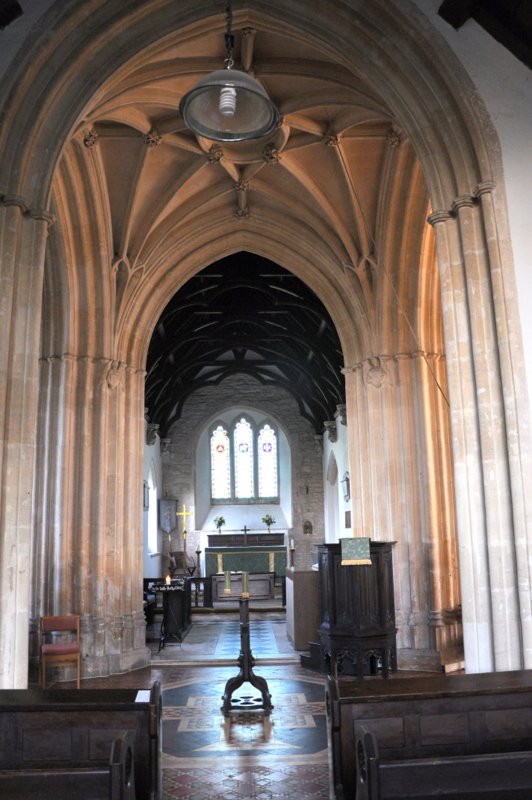 Willersey was the summer residence of the Abbots of Evesham. Abbot Zattan (1379-1418) designed the church pillars which are said to based on those which were in Evesham Abbey. Parts of Willersey Manor House in Main Street were built in the 14th Century though it has many later extensions. It is built like many local buildings from coursed squared and dressed limestone. There is a secret stone altar with small incised crosses hidden below a window sill in an upper room. The garden features a former dovecote. The house was originally associated with Evesham Abbey. The earliest part of the house is reputed to have been built to be the summer residence of the Abbots of Evesham. They also enlarged the church to its current cruciform shape by adding the chancel, transept and the central tower. In the 16th and 17th centuries the manor house belonged to the Roper family who were staunch Catholics, probably explaining the secret stone altar. The house also has traditional associations with the Elizabethan composer, William Byrd. When we are looking at historic buildings, we can be the closest we can come to seeing our own history. In this panorama from Willersey Hill you can see Willersey first and then the spire of Saintbury Church. Mist in the hollow, a fine day will follow. Mist on the hill, it always rains and it always will. These are early parish records. There is evidence of very early settlements in Willersey To avoid confusion, Willersley is a village in Herefordshire. Here is an intriguing story about it. Willersley Castle is in Derbyshire and Willersley Park is in Kent. Do note however that there is definitely only one Willersey worldwide.  On this 16th century Sheldon Tapestry Map of Worcestershire and surrounding counties in the Bodleian Library in Oxford, Willersey is spelt Welosay. The churches in each town or village are quite accurately represented. Until the dictionary, an invention of only the last few hundred years, the English language lacked any comprehensive system of spelling rules. Consequently, spelling variations in names are frequently found in early Anglo-Saxon and later Anglo-Norman documents. This applied to people's names and also to place names. Between about 1280 to 1350 the following spellings of Willersey could be found :- Wylardesey, Wylardsey, Willesleye, Willerseye, Willersei, Willarseye, Wylardseye, Wyllardeseye, Wyllarseye and Wylareseye. One possible meaning of the name is thought to be “Island of a man called Willhere or Willheard.” another is that it is after a salt boilers pit or salt boilers island; an explanation of the existence of an island could be that the three streams which go through Willersey might in the past have spread out and isolated some of the land. There was a young farmer of Willersey, Who's sheep were incredibly fleecy, When they asked him why, He said because I Teach them Latin, videbo, will I see! It is difficult to do justice to this long history in a few pages but we will from time to time add more. Should you wish to add or correct anything do please email us. There are several residents of Willersey who have lived all their lives here so we will be able to occasionally add stories and other information which will not be found in the Gloucestershire archives and published books. Here is another brief history by prominent resident Maurice Andrews MBE. All new residents are given a copy of the Welcome to Willersey booklet and this history is included in it. In 1965 Willersey Women's Institute produced a comprehensice history of Willersey and Saintbury. (This is a huge file.) |
||||||||||||||||||||
| Willersey has a facebook page. Go to top | Menu & Search Page Email us here:- |